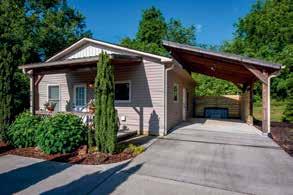









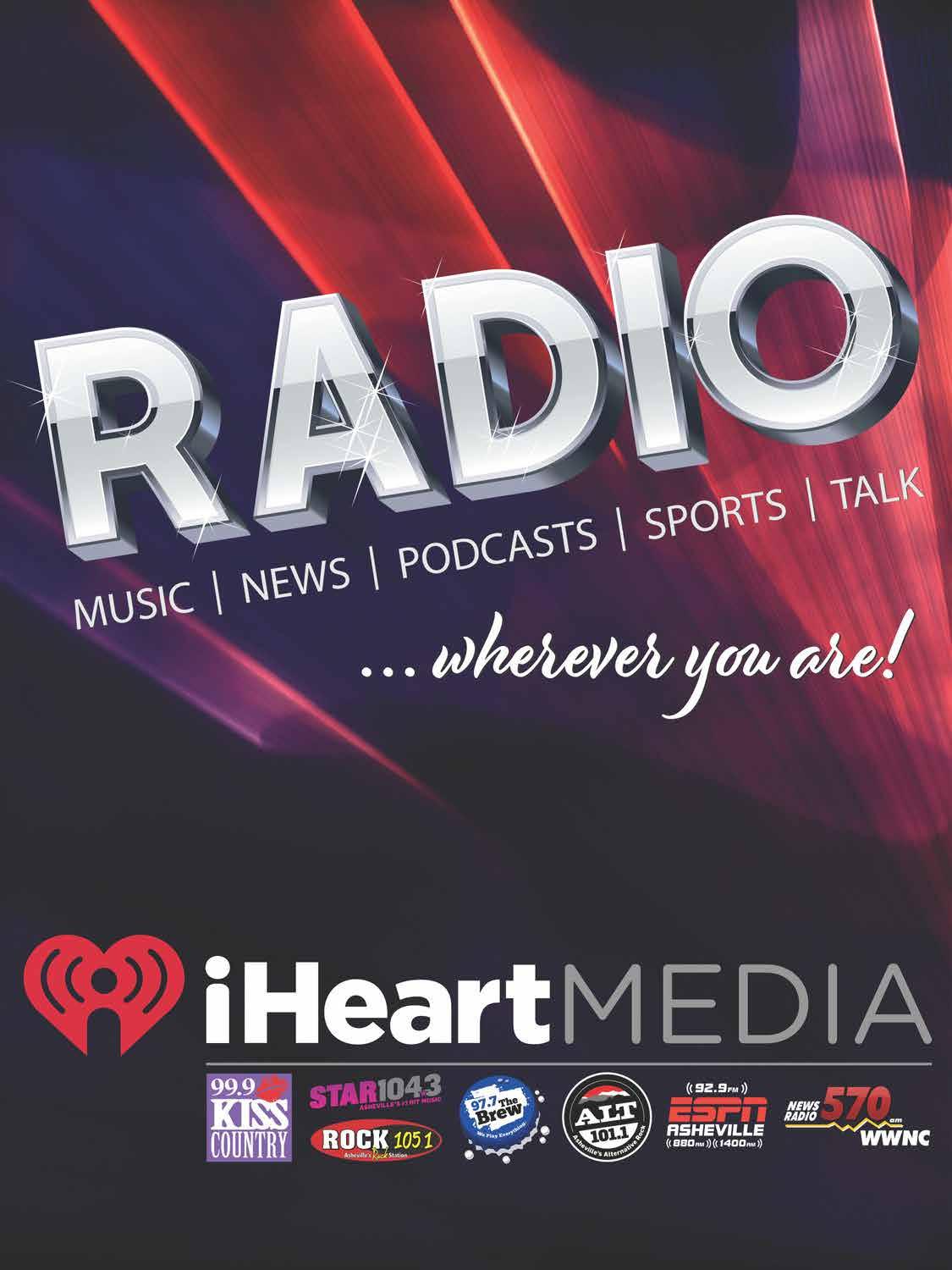
























































Dear Friends of the Asheville Symphony Orchestra, A deeply rooted pillar of Asheville’s creative community, the Asheville Symphony Orchestra has embodied a devotional passion for music since 1960. From innovative collaborations to genre-defying performances, ASO’s ever-evolving programing reflects the pulse of our city — each note captivating audiences and pushing beyond the boundaries of traditional concert experiences.














































































































Explore Asheville is honored to support your mission and talent in capturing the heart of the people of Western North Carolina and its guests. We are dedicated to shining our spotlight on the artists, makers, and musicians who help shape our community's distinct story.










































After all, we wouldn't be Asheville without artists like you.








































































































































































Dear Friends,
The Asheville Symphony exists to spark connection and inspiration — and it’s your enthusiasm and support that make it all possible.
This season marks several exciting milestones. We are proud to introduce Dr. Brian Allen as our new First Concertmaster and Jackie Tso as our first-ever Second Concertmaster: an expansion of artistic leadership that reflects the growing scope and ambition of our orchestra. We are also thrilled to present the second Asheville Symphony Artist Residency, featuring the incomparable operatic star, Isabel Leonard.
Other major highlights include appearances by Emanuel Ax, Ben Folds, and Awadagin Pratt, as well as a partnership with the Black Mountain College Museum + Arts Center for Masterworks 2: Convergence, a program that could only authentically take place here in Asheville.
Your Symphony is also experiencing strong growth in subscriptions and philanthropy, even as arts organizations around the country face challenges. Thanks to your support, we are expanding our reach and deepening our artistic excellence, hosting acclaimed soloists on stage and impacting thousands of students across Western North Carolina.
The Asheville Symphony is about so much more than music.
It’s about creating moments of joy, reflection, and unity in a world that deeply needs them. It’s about community. Whether you’re here as a subscriber, a first-time guest, a donor, a volunteer, or a parent of a young musician — we are so glad to welcome you.
There are many ways to engage with your Symphony this season: attend a concert, join the Guild or Chorus, volunteer at events, or support our music education programs. However you choose to connect, know that you are part of something meaningful.
We can’t wait to share this extraordinary season with you.
Warmly,

Daniel M. Crupi Executive Director




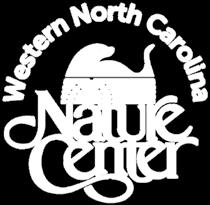



















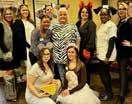








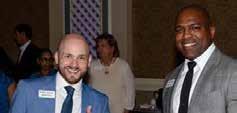


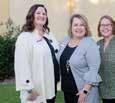




ALT ASO @ White Horse Black Mountain
Ben Folds with the Asheville Symphony
Bach
ALT
Voice

with the Asheville Symphony Chorus
Piano Recital with Awadagin Pratt
Scan the QR code or visit AshevilleSymphony.org to learn more about the 2025-2026 season.








Become a Masterworks Series
Subscriber and experience more music, more savings, and more exclusive benefits!
Apply the value of today’s ticket towards a subscription to secure the following benefits all season long:
Exclusive Savings
Save up to 15% on single ticket prices and avoid extra fees.
First Access
Subscribers get early access to pops concerts and recitals.
Worry-Free Convenience
Change of plans? You can swap tickets to any other Masterworks performance.
Tax Deduction Perks
Donate unused tickets for a tax deduction upon request.
Don’t miss out on this year’s unforgettable season — secure your seats today!
Remember: you can apply the cost of today’s ticket to a Masterworks Series Subscription! Call 828.254.7046 or stop by the Asheville Symphony box office (visit page 7 for location and hours) to upgrade today’s ticket into a subscription that you can enjoy all season long!



















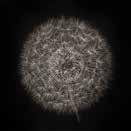

EXECUTIVE OFFICE
Daniel M. Crupi Executive Director
Ines Lopes Assistant to the Executive Director
DEVELOPMENT
Sara Henley Director of Development
Dana Alward Development Manager
Caitlin Duncan Development Associate
EDUCATION
Tyson Hamrick ASYO General Manager
Mika Hood ASYO Programs & Operations Coordinator
Rodney Workman ASYO Site Coordinator
FINANCE
Allie Lorette Controller
MARKETING & PATRON RELATIONS
Alex Hill Director of Marketing & Patron Relations
Claire M. Allen Art Director
Melissa Starkweather Patron Relations & Communications Manager
Michelle Troszak Patron Relations & Office Coordinator
ORCHESTRA OPERATIONS
Sally J. Keeney Orchestra Manager
Michael Di Trolio Principal Librarian
Paul Stroebel Stage Manager

SELECTED IN COLLABORATION WITH

IN TOUCH Asheville Symphony Office 27 College Place, Suite 100, Asheville, NC 28801 Monday - Friday ∙ 10:00 a.m. - 4:00 p.m. 828.254.7046 info@ashevillesymphony.org







OFFICERS
Adarrell Gadsden • President
Sue Luther • Immediate Past President
Sallie Broach • Secretary
G. Edward Towson, II ⁺ • Treasurer
DIRECTORS
Cliff Albertson
Jack Anderson⁺
Michael Andry
Thomas C. Bolton⁺
Sallie Broach
Susan Harrington Butts
Sean Comeaux
Dr. John Cuellar
George Dambach
John W. Ellis
Dr. Bolling Farmer
Adarrell Gadsden
Bill Gettys⁺
Scott Gregg
Fred Groce
Keith Keener
Mary Kirby
Pam Lowe-Hoyte
Sue Luther
Carol McCollum⁺
Heather Parlier
Kevin Pasarilla
Patrick O’Cain
Jeffrey Owen
Odile Perrenoud
Richard Schaffer
Jayne Schnaars
Kevin Schwab
Rachel Sossoman
James S. Thompson
Ed Towson⁺
Sarah Van Gunten
David Worley
Olivia Zahler




As I begin my first year as President of the Asheville Symphony Board of Directors, I’m filled with a deep sense of gratitude and excitement for the work ahead. To help steward this beloved institution — one that has been a cornerstone of the arts in Asheville for more than 60 years — is both a great honor and a great responsibility.
This year, the Symphony steps into a season that is vibrant, imaginative, and truly reflective of the diverse, creative spirit of our city. Asheville is a city that thrives on creativity — and the Symphony is proud to be part of that energy. From timeless masterworks to fresh and unexpected collaborations, this season is a celebration of both musical excellence and artistic exploration. We are committed to building experiences that inspire — and to ensuring those experiences are welcoming and accessible to all.
I am especially excited about the impact of our education programs, which reach thousands of young people across Western North Carolina each year. Introducing young people to the wonder of live orchestral music is one of the most rewarding parts of what we do. Investing in the next generation of musicians and music lovers ensures that the spirit of the Symphony will continue to thrive well into the future.
I’m incredibly grateful to our board, our dedicated staff, the talented musicians, our amazing volunteers, and, of course, the patrons who make this work possible.
Welcome to the Asheville Symphony’s 2025–2026 season. It is a privilege to share this journey with you as we continue to expand our reach, deepen our impact, and celebrate the transformative power of music together.





DIRECTORS EMERITI
George M. Bilbrey, Jr. M.D.*
J.K. MacKendree Day
Joyce R. Dorr, Ph.D.
George F. Goosmann, III
Gerald C. Kitch
Karl S. Quisenberry, Ph.D.*
John J. Sherman, Jr.
W. Herbert Smith, Jr.
1962-1964: Gaylord Davis
1964-1966: Rudolf Gumpert
1966-1968: John W. Rutland
1968-1970: Robert K. Weiler
1970-1971: Robert Saenger
1971-1972: William C. Spencer, Jr.
1972-1975: John K. Knight
1975-1977: Lawrence D. Ford
1977-1979: Mortimer Ryon
1979-1982: James E. Dooley
1982-1984: J.K. MacKendree Day
1984-1985: George Saenger
1985-1987: Spencer Atwater, M.D.
1987-1989: George Goosmann, III
1989-1992: John J. Sherman, Jr.
1992-1994: G. Edward Towson, II
1994-1995: Stephen L. Barden, III
1995-1997: Joyce R. Dorr, Ph.D.
1997-1999: C. David Pheil
1999-2001: George M. Bilbrey, M.D.
2001-2003: W. Herbert Smith, Jr.
2003-2004: James P. Topp
2004-2006: Thomas C. Bolton
2006-2008: Carol McCollum
2008-2010: Jack Anderson
2010-2012: Carolyn L. Hubbard
2012-2014: William L. Gettys
2014-2017: Irene Stoll
2017-2019: Doris Phillips Loomis
2019-2021: Bolling Farmer
2021-2023: Michael Andry
2023-2025: Sue Luther

We applaud the Asheville Symphony Orchestra for sharing one of life’s greatest treasures with our community.
“Where Words Fail, Music Speaks” – Hans Christian Andersen

The Brookshire Garside Group Private Wealth Management 828-239-8781 BrookshireGarsideGroup.com ©2023 Robert W.




















































A love of the arts and a sense of hospitality inspired George Vanderbilt’s masterpiece: Biltmore. Share in that legacy today by joining our Annual Passholder family.


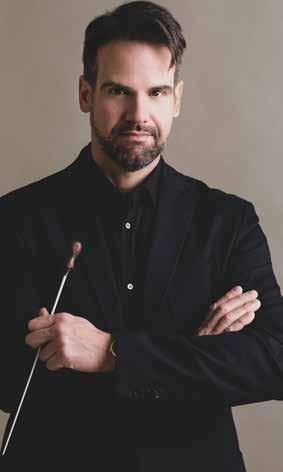
Darko Butorac stands out as one of the most compelling conductors of his generation, praised for his “exceptional combination of passion, elegance, and well-timed pacing” (Westdeutsche Zeitung). He serves as the Music Director of the Asheville Symphony Orchestra, where his innovative programming and dynamic leadership have captivated audiences.
Butorac has guest-conducted numerous prestigious orchestras across Europe, Asia, and the Americas. Notable performances include the Deutsche Kammerphilharmonie Neuss and the Georgische Kammerorchester Ingolstadt (Germany), the Rubinstein Philharmonic of Lodz (Poland), the Xiamen Symphony (China), the Tallinn Sinfonietta (Estonia), the Belgrade Philharmonic, and the Slovenian Radio Symphony Orchestra. His passionate and precise interpretations have earned him widespread acclaim.
He has collaborated with world-renowned artists such as Renée Fleming, Garrick Ohlsson, Olga Kern, Lawrence Brownlee, Jon Kimura Parker, Noah Bendix-Balgley, Anthony McGill, and Oscar-winning actor J.K. Simmons. He has appeared at prestigious venues such as the Vienna Konzerthaus, the Gran Teatro Nacional of Lima, Belgrade’s Kolarac Hall, the Teatro Magnani in Italy, and the Tartu, Aspen, and St. Olav summer music festivals.
In addition to his work in Asheville, Butorac served as the Music Director of the Tallahassee Symphony, where he was known for innovative programming and community engagement. He broadened the orchestra’s reach, introducing eclectic repertoires that attracted new audiences and fostered a deeper appreciation for orchestral music.
A cornerstone of Butorac’s career is his commitment to education and outreach. He has led masterclasses and workshops worldwide, sharing his expertise with the next generation of musicians. During the COVID-19 pandemic, he pioneered virtual formats to keep the orchestral experience alive for audiences and students alike.
As a Grand Prix Laureate of the Vakhtang Jordania International Conducting Competition, Butorac’s accolades reflect his exceptional talent and dedication to the art of conducting. His TEDx talk on leadership and the role of the conductor has garnered nearly 200,000 views, resonating with a wide audience and highlighting his ability to inspire both within and outside the concert hall.
Fluent in multiple languages and deeply rooted in a multicultural background, Butorac brings a unique perspective to his work, blending tradition with innovation. His vision for the future of orchestral music emphasizes inclusivity, accessibility, and artistic integrity, continually striving to break down barriers and bring the transformative power of music to all.
For more about Darko Butorac and his upcoming engagements, visit his official website, www.darkobutorac.com.



Violin
Brian Allen • First Concertmaster
Jackie Tso • Second Concertmaster
Martha Gardner • Associate Concertmaster
⁺Karen Pommerich • Assistant Concertmaster
Kathryn Gardner Triplett Principal Second Violin
Debra L. Anthony
Associate Principal Second Violin
⁺Pedro Oseias Maia
Assistant Principal Second Violin
Marianna Brickle
Teresa M. Curran
Elizabeth Fee-Elliott
Lori G. Hammel
*Dorothy L. Knowles
Virginia Kowal
LuAda Malcom
Ruben Orengo
Mariya S. Potapova
Inez Hullinger Redman
Paul E. Stroebel
Viola
Kara F. Poorbaugh • Principal
Jenny Kozoroz • Associate Principal
Kathryn Bracewell
Hannah Dara
Gina Mashburn Heath
Edward J. Smith
Daphne Waggener
Cello
Daniel Mumm • Principal
J. Franklin Keel • Associate Principal
Paul Maxwell • Assistant Principal
Cherylonda F. Fitzgerald
Paul S. GhostHorse
Katie Hamilton
Patricia Koelling Johnston
E. Sojeong Park
Bass
Flute
Lissie J. Shanahan • Principal
Kellie Henry
Piccolo
Dilshad B. Posnock
Oboe
Alicia Chapman • Principal
*Cara Mia Jenkins
English Horn
Amanda J. LaBrecque
Clarinet
Harry H. “Chip” Hill • Principal
Karen Farah Hill
Bass Clarinet
Shannon Thompson
Bassoon
Michael J. Burns • Principal
Amber Ferenz
Contrabassoon
William L. Peebles
Horn
Jeffery B. Whaley • Principal
*Michael L. Brubaker
Anneka A. Zuehlke
Travis A. Bennett
Trumpet
T. Mark Clodfelter • Principal
Christopher Underwood
Open Chair
Trombone
Justin Croushore • Principal
L. Rienette Davis
Bass Trombone
Jeremy Marks
Tuba
Bethany Wiese • Principal
Timpani
Todd D. Mueller • Principal
Percussion
Open Chair • Principal
Michael Morel
Matthew Richmond
*Brian Tinkel
Harp
Open Chair • Vetust Study Club Chair
Keyboard
Open Chair • Susanne Marcus Collins Chair
Michael Di Trolio • Principal Librarian
Paul Stroebel • Stage Manager
*M. Lee Metcalfe • Co-Principal
Vance M. Reese • Co-Principal
Michael Di Trolio
Matthew P. Waid


* Orchestra Committee Member
⁺ One Year Appointment
Section string players are listed alphabetically. (loa) = Leave of Absence





Thank you to our incredible musician hosts!
The generosity and warmth of our musician hosts creates a welcoming home-away-from-home for our traveling musicians. Thank you for being an integral part of the Asheville Symphony community!
Mary and Jack Anderson
Diana Bilbrey
Georgia Case
Kathy and George Dambach
Linda and Michael Gilpin
Clair Griffith and Geoffrey Mitchell
Suzanne and Steven Hageman
Rita Hayes
Mountaine Jonas
Pam and David Lane
Jill and Joe Lawrence
Susan and David Leader
Sue and George Luther
Carol and Hugh McCollum
Suzanne Neilson
Katie and Phil Osborn
Odile Perrenoud and Bill Schulz
Jayne Schnaars and Donald Gavin
Danielle Thout
Jill Vargo and Tony Sciara
Connie and Gary Wald
Millie Whitney





We’re proud to support business owners in Western North Carolina with access to the powerful resources they need to launch, grow and succeed.
To learn more, visit bankofamerica.com/asheville
What would you like the power to do?®





Two
distinguished violinists will lead
the Asheville Symphony into its next chapter alongside Music Director Darko Butorac: Dr. Brian Allen has
been appointed First Concertmaster and Jackie
orchestra’s first Second Concertmaster.

Dr. Allen, a seasoned orchestral musician and educator, made his official debut at Symphony in the Park on Sunday, August 31, 2025. He currently serves as Principal Second Violinist of the Hilton Head Symphony Orchestra and recently held a one-year contract with the St. Louis Symphony. He holds a Doctorate in Violin Performance from the University of Michigan, studying with David Halen, and earned his bachelor’s and master’s degrees at the Cleveland Institute of Music with Jaime Laredo and William Preucil.
“Brian is a brilliant artist, garnering sincere and effusive praise from an overwhelming majority of musicians
Tso makes history as the
regarding his raw talent, musicality, and joyful presence within the orchestra,” said Executive Director Daniel Crupi.
Dr. Allen expressed enthusiasm about his new role: “The concertmaster sets the standard for preparedness… More broadly speaking, the concertmaster’s attitude tends to be infectious.”
Allen emerged from a years-long selection process that drew five national finalists. He succeeds Jason Posnock, who held the role for over 15 years before becoming President and CEO of the Brevard Music Center.
Jackie Tso Named First-Ever Second Concertmaster

In a historic move, the Asheville Symphony has appointed Jackie Tso as its Second Concertmaster.
Tso has performed as a soloist with the Cincinnati Symphony Orchestra and the Beijing Broadcasting Orchestra. A Juilliard graduate, she currently serves as Concertmaster of the Greenville Symphony Orchestra.
Both Allen and Tso played in the St. Louis Symphony Orchestra’s violin section during the 2022-2023 season.
As First and Second Concertmaster, both musicians will play critical leadership roles within the orchestra and work closely with Music Director Darko Butorac. “I am really happy we were able to attract two such excellent musicians,” said Butorac. Their appointments signal an exciting new chapter for the Asheville Symphony, promising enhanced leadership and artistic excellence.


Proud Sponsor of the Asheville Symphony






































The Asheville Symphony Guild is a volunteer organization that has been supporting the Asheville area by raising funds and sponsoring music education programs in local schools for more than 50 years.
From festive garden parties to elegant evenings with Asheville Symphony soloists, Musical Feasts are a chance to gather with friends, share great food, and support the Symphony you love while hearing from some of the greatest musicians playing today. Each event helps fund the Symphony’s inspiring programs.
The Guild helps bring classical music to thousands of elementary school children across Western North Carolina. Through Music in the Schools, professional musicians visit local classrooms — planting seeds of creativity and joy for the next generation.
Whether it’s the Fall Potluck or the annual Spring Gathering, our members treasure the friendships, laughter, and shared passion for music that the Guild provides.
Make Friends. Make Music Matter.
The Guild unites music lovers who want to give back, stay connected, and enrich our community. As a member, you’ll enjoy meaningful volunteer opportunities, vibrant social events, and the satisfaction of supporting music education for the next generation.
Join the Asheville Symphony Guild and be part of something joyful and lasting.
For more information and to join, visit AshevilleSymphonyGuild.org







The Asheville Symphony Chorus is a volunteer vocal ensemble that has been performing in the Asheville area for 33 years.
FERN HILL
November 22, 2025
First Baptist Church of Asheville
Join us for a concert of great American choral works, featuring John Corigliano’s mid-century epic Fern Hill.
A MESSIAH SING-ALONG
December 2, 2025
Trinity Episcopal Church
Our most popular concert, the Messiah Sing-along brings together the WNC community each year for a joyous night of favorites from Handel’s oratorio.
HANDEL’S MESSIAH WITH THE ASHEVILLE SYMPHONY
December 20, 2025
First Baptist Church of Asheville
Visit page 70 for details.
MASTERWORKS 6: REQUIEM
April 18, 2026



Join the Asheville Symphony Chorus and help bring the beauty of choral music to WNC. We rehearse once per week on Tuesday nights from 7:00 p.m. - 9:30 p.m. in downtown Asheville. We warm up. We practice hard. We have a lot of fun.
First Baptist Church of Asheville
The Chorus joins the Asheville Symphony for a performance of Mozart’s Requiem alongside four incredible soloists.
For more information on auditions, performances, and more visit AshevilleSymphonyChorus.com.



The Asheville Symphony Symphonettes is a volunteer organization and high school girls’ service club.







The Asheville Symphony Youth Orchestra (ASYO) is Western North Carolina’s premier orchestral training program, serving approximately 200 students ages 8-19.
With two string orchestras, two full orchestras, a beginning strings class, percussion ensembles, a flute choir, and various chamber groups, the Asheville Symphony Youth Orchestra offers an ensemble for nearly every instrument and experience level.



Throughout the season, ASYO students participate in retreats, masterclasses, and workshops led by professional musicians, guest artists, and some of the top music educators in Western North Carolina. Through these experiences, students grow as individuals, develop ensemble skills, and gain life skills such as perseverance, hard work, planning, self-awareness, creativity, and self-evaluation — skills they can carry with them long after their time in the ASYO.
Visit AshevilleSymphony.org/ASYO to learn more about the Youth Orchestra including details about upcoming performances, audition information, and more.





Experience these talented young musicians at one of their performances this season.
CIRQUE DE LA SYMPHONIE
December 4, 2025
Harrah’s Cherokee Center, Asheville
The ASYO, Asheville Symphony, and the talented company of Cirque de la Symphonie combine forces for a family-friendly holiday performance. See page 68 for details.
WINTER CONCERT
December 8, 2025
Asheville High School Auditorium
Featuring the Overture, Divertimento, Sinfonia, Concert, Youth Philharmonic, Percussion Ensembles, and Flute Choir.
ARTIST RESIDENCY CONCERT FEATURING ISABEL LEONARD
March 23, 2026
Asheville High School Auditorium
Featuring the Youth Philharmonic with GRAMMY-award winning vocalist Isabel Leonard as part of the 2026 Artist Residency. See page 82 for details.
SPRING CONCERT: “MAY THE FOURTH BE WITH YOU”
May 4, 2026
Asheville High School Auditorium
Featuring the Overture, Divertimento, Sinfonia, Concert, Youth Philharmonic, Percussion Ensembles, and Flute Choir.
Concert dates and times are subject to change. For more information, please visit AshevilleSymphony.org. To learn more about the ASYO program and how to join, email jthamrick@ashevillesymphony.org or visit AshevilleSymphony.org/ASYO.
Tyson Hamrick ASYO General Manager
ADMINISTRATIVE STAFF
Rodney Workman Site Coordinator
Mika Hood Operations & Program Coordinator
Jason Posnock Advisor
Cara Jenkins Advisor
Cynthia Roop Advisor
TEACHING STAFF
Dr. Alexandra Dee
Music Director, Youth Philharmonic & Concert Conductor
Amanda Tant
Sinfonia Conductor
Ashlee Booth
Divertimento Conductor
Cady Robison
Overture Class Conductor
Dr. Brian Tinkel
Percussion Director
Dr. Sophia Anastasia
Flute Choir Conductor
Dilshad Posnock
Woodwind Coach, Honors Chamber
Ensemble Coach
Franklin Keel
Strings Coach, Honors Chamber
Ensemble Coach
Dr. Jason Slaughter
Brass Coach, Honors Chamber
Ensemble Coach
A special thank you to Drs. Joanne and Tom Parker for their generous support of the ASYO this season. Their financial support will positively enhance music education for hundreds of students across Western North Carolina by providing scholarships, access to instruments, and unique experiences.











Judy Murren
Travis Peck
Donald and Brenta Poole
Allison Quigley
Carolyn Ramsey
Robert Randall
Gail Reagan and Jim Graham
Ellen Robbins
Liz Rollins
David Russell
Kevin Scanlon
Beth Stickle Schoenheit
Brian and Caron Smith
Jillian Smith
J. Howard and Honey Solomon
Carole Sorrenti
Charles and Sue St. Clair
Barbara and Barry Stagg
Paul Stroebel
Kenny Sudnik
Alina Suprunchik
Paige Taylor
Margot Voorhees
Virginia Waymouth
Melanie Welty
Paul B. Williamson
Don Wright

PROGRAM HIGHLIGHT
ASYO Performs with GRAMMYAward Winning Trio Time for Three as part of the 2025 Asheville Amadeus Festival.
Last spring, members of the Asheville Symphony Youth Orchestra had the extraordinary opportunity to perform alongside GRAMMY Award-winning ensemble Time for Three as part of the biennial Asheville Amadeus Festival.
Every ASYO student — from the youngest string players to the most seasoned high school musicians — took part in rehearsals and shared the stage with the genre-defying trio. The program featured an eclectic mix, including selections from Hamilton, a classic hit by Guns N’ Roses, and a performance of Time for Three’s chart-topping original Joy.
The experience was both inspiring and unforgettable, offering students a rare chance to collaborate with world-class artists in a professional setting.
These kinds of transformative musical experiences are made possible through the generosity of the Friends of the ASYO — our community of donors who ensure that Western North Carolina’s most dedicated young musicians have access to high-quality artistic opportunities.

Gifts to the ASYO ensure that every young musician can access impactful educational experiences, regardless of financial circumstances. Every dollar you give reduces the cost of participation for every student.


Thank you for making this unforgettable performance possible.












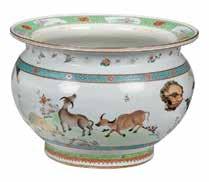

Brunk Auctions has been bringing buyers and sellers together for 40 years. We specialize in the sale of fine art, jewelry, Asian art, antique furniture, coins, and countless other areas of collecting, ranging from contemporary art to antiquities. Excellence in connoisseurship is the hallmark of our specialist staff. Whether buying or selling, our goal is consistent and thoughtful client service and results that will exceed your expectations.


MASTERWORKS 1
First Baptist Church of Asheville September 20, 2025 2:00 p.m. + 8:00 p.m.
Darko Butorac Conductor
Emanuel Ax Piano
The resilience of our community shines in this Hurricane Helene milestone program. Experience renewal and rebirth through Beethoven’s Third Piano Concerto featuring piano legend Emanuel Ax, Beethoven’s “Heroic” Symphony, and a stirring new commission by Asheville Symphony musician Amber Ferenz honoring the heroes who led us through our darkest hour.
A portion of the proceeds of this concert will benefit the River Arts District Artists (RADA) Foundation, who is leading the way for the revitalization of this critical arts district.








Amber Ferenz (b. 1972) ∙ Approximately 7 minutes
Resilience is the thread that runs through this season-opening program. That theme connects Amber Ferenz’s poignant world premiere The Things We Say to Death to the works by Beethoven, especially the German composer’s Third Symphony, a testament of defiance. The Things We Say to Death was commissioned by the Asheville Symphony to honor all those who endured loss during Hurricane Helene.
Ferenz, a bassoonist with the Asheville Symphony for the past 15 years, wrote the following notes about the seven-minute piece:
“I experienced Hurricane Helene in the metro Atlanta area. We were spared the worst of it as the storm tracked farther east than we were expecting as it came through. The storm rainfall total where we live was around 12 inches, and only a few trees came down in the immediate area during a very windy night, which we spent in the basement of our house, and in the morning, we went outside to assess damage. Finding none, we were relieved until harrowingly catastrophic reports of loss and flooding started coming in from Western NC. After over 15 years of performing regularly as a section bassoonist with the Asheville Symphony, this was devastatingly horrific and personal news, and I spent a great deal of time over the next week combing news sources and social media for information and hoping for sitreps from my musician family and other friends in the mountains.”
“None of us dared to dream that the resilient community that is Asheville might band together and get to work immediately, using indomitable will to move mountains of mud, ruined tree trunks, and debris. I consider it a miracle of the highest order that the orchestral season only took a brief hiatus and was back on track as soon as power and water were restored. The City of Asheville’s water boil notice was lifted exactly two days before we came to town to begin rehearsals for the Asheville Symphony’s Messiah in November. During rehearsals, Music Director Darko Butorac asked me if I might be interested in writing a piece to commemorate the one-year milestone of the storm to open the 2025-26 season, and I joyfully accepted the challenge.’
“It’s a tall brief, being asked to take a cataclysmic event and make beauty out of it, but writing this piece was a true delight. It’s in four sections. The first section depicts life on any given day in the mountains: the sunshine, birds, and wind in the trees that we all know and love. The second section brings in the devastation brought by Helene. The third section is a dream interlude, where Life and Death dance together, outside of Time’s constraints. The fourth section brings the devastation theme back, rather like waking up from a pleasant dream back into unpleasantness, with Death having the final word. What do we say to Death? Always, we say ‘NOT TODAY.’ Sometimes, that day comes. We bargain, we scream, we cry, we rail at the unfairness of it, we grieve the losses and the change forced upon us, and we struggle to comprehend the ways our lives are made anew from the ashes of what was. Sometimes, Death comes as a blessing in the guise of ultimate healer, bestowing the grace of ultimate transformation upon our reluctant and unwilling selves.”
Amber Ferenz

(continued on next page)
The Things We Say to Death
Ludwig van Beethoven Piano Concerto No. 3 in C minor, Op. 37
Emanuel Ax, Piano
I. Allegro con brio
II. Largo
III. Rondo: Allegro
Ludwig van Beethoven Symphony No. 3 in E-flat major, Op. 55, “Eroica”
I. Allegro con brio
II. Marcia funebre: Adagio assai
III. Scherzo: Allegro vivace
IV. Finale: Allegro molto
CONCERT CO-SPONSORS
MUSIC SPONSORS ARE LISTED ON PAGE 100
Media partner Blue Ridge Public Radio will air a recording of this performance, featuring conversations with the Asheville Symphony, on BPR Classic and bpr.org on Tuesday, October 21 at 7:00 p.m. and Thursday, October 23 at 9:00 a.m.
PREMIUM SEASON SPONSORS




“With deep gratitude to my colleagues in the Asheville Symphony, my family, my friends, and everyone who has been touched by Hurricane Helene, I leave this piece with you. It is my hope that this piece brings the exact healing needed for everyone who hears it.”
Piano Concerto No. 3 in C minor, Op. 37
Ludwig van Beethoven (17701827) ∙ Approximately 34 minutes
Ludwig van Beethoven’s Piano Concerto No. 3 in C minor stands as a pivotal work in the evolution of the piano concerto, bridging Classical clarity with the emerging spirit of Romanticism. Composed around 1800 and premiered in 1803 with Beethoven himself as soloist, this concerto reflects the composer’s growing maturity and boldness, showcasing both structural ingenuity and emotional depth.
The concerto opens with an orchestral exposition that introduces the primary themes in the stormy key of C minor — a key Beethoven often associated with drama and intensity, as seen in works like the “Pathétique” Sonata and Fifth Symphony. The mood is tense and foreboding, setting the stage for the piano’s entrance. When the soloist finally enters, it is not with virtuosic display, but with a subdued, thoughtful restatement of the first theme, highlighting Beethoven’s narrative sense and his desire to integrate soloist and orchestra more organically than his Classical predecessors.
The second movement, Largo, is a lyrical and introspective contrast in E major, an unusual and distant key from C minor. The piano opens alone with a gentle, hymn-like theme, almost like a Chopin nocturne, setting a mood of serene contemplation. Throughout the movement, Beethoven crafts a subtle and moving dialogue between piano and orchestra, evoking a profound spiritual calm that offers emotional relief from the drama of the outer movements.
The final movement, Rondo: Allegro, returns to C Minor and features a recurring, playful main theme that undergoes a variety of transformations. Beethoven combines wit, intensity, and rhythmic vitality, leading to a jubilant and triumphant coda in C major. This ending, shifting from the minor-key tension to a radiant major-key resolution, feels earned and cathartic.
Beethoven’s Piano Concerto No. 3 occupies a unique place in his output. While still strongly influenced by Mozart and Haydn, it hints at the more heroic and revolutionary spirit of his later works, including the Third Symphony. It remains a staple of the repertoire, admired for its bold contrasts, formal sophistication, and emotional depth.
Ludwig van Beethoven (17701827) ∙ Approximately 47 minutes
Beethoven’s so-called “heroic period,” 1803-1812, can be thought of as the musical embodiment of the composer confronting his formidable personal challenges, seizing fate by the throat.
The other major inspiration for the Third Symphony was Napoleon Bonaparte, whom Beethoven admired as a symbol of Enlightenment ideals and revolutionary spirit. Beethoven dedicated the symphony to Napoleon. However, when Napoleon declared himself Emperor in 1804, Beethoven famously scratched out the dedication in fury. “Now he, too, will tread underfoot all the rights of man, and indulge only his ambition,” Beethoven exclaimed. “He will become a tyrant!”
The symphony’s published title became simply “Sinfonia Eroica, composed to celebrate the memory of a great man.”
The Eroica (Italian for “Heroic”) Symphony marked a turning point for Beethoven and Western classical music between the Classical and Romantic eras. Completed in 1804 and premiered in 1805, the Third Symphony is notable for its emotional depth, structural innovation, and dramatic scope. At approximately 45–55 minutes in length, it was the longest symphony ever composed at that time and challenged audiences’ expectations with its bold ambition and expressive intensity.

The first movement (Allegro con brio) features a vigorous dialogue between piano and orchestra. Beethoven pushes the boundaries of the concerto form here, allowing the piano to engage in dramatic development rather than merely decorate the orchestral material. A notable feature is the cadenza, which Beethoven wrote out himself — a departure from the then-common practice of improvised cadenzas — underscoring the work’s architectural precision and personal expression.
Two notable developments in Beethoven’s life inspired the German composer’s revolutionary Symphony No. 3. One was deeply personal: Beethoven’s worsening deafness brought him in 1802 to an emotional breaking point and even thoughts of suicide. He despaired of his hearing loss, “an infirmity in the one sense which should have been more perfect in me than in others, a sense which I once possessed in highest perfection,” as he wrote in the famous Heiligenstadt Testament.
Yet, Beethoven was saved by music and the hope that he had great things still to accomplish. “I will seize fate by the throat,” he wrote to a friend. “It shall not wholly overcome me.”
The Eroica begins with two striking E-flat major chords that serve as a forceful introduction. The first movement (Allegro con brio) is expansive and dynamic, filled with conflict, resolution, and dramatic development. It introduces a wealth of thematic material and features complex harmonic progressions, including daring modulations and dissonances. The movement is notable for its length and the sheer emotional weight it carries, blending heroic struggle with moments of introspection.
The second movement, a funeral march (Marcia funebre: Adagio assai), stands as one of the most profound musical elegies ever written. Set in C minor, it reflects solemnity and searing grief yet it is not without hope. It alternates


grandeur with striking dissonance. Many listeners and scholars have interpreted it as a lament not just for a fallen hero, but also for lost ideals or the human condition more broadly.
The third movement, a lively Scherzo (Allegro vivace), returns to E-flat major and provides an energetic contrast to the somber second movement. It is fast, rhythmic, and filled with playful spirit. The Trio or middle section features prominent hunting horn calls, which add a rustic and jubilant character. This movement was innovative in replacing the traditional minuet with a scherzo, which became a common practice in later symphonies.
The finale (Allegro molto – Poco Andante – Presto) is a set of variations on a theme Beethoven had previously used in his ballet The Creatures of Prometheus and his Eroica Variations for piano. Beethoven transforms a simple theme through a wide array of textures, moods, and harmonic treatments. The movement culminates in a triumphant conclusion, bringing the heroic journey full circle.
Beethoven’s Eroica revolutionized the symphonic form. It expanded the expressive and structural possibilities of the genre and paved the way for the Romantic symphony. Its themes of heroism, struggle, loss, and triumph continue to resonate with audiences, making it one of the most influential and frequently performed works in the classical repertoire.
Program notes by Paul Hyde © 2025
Paul Hyde, a longtime arts journalist, is an English instructor at Tri-County Technical College in South Carolina. He writes regularly for the Greenville Journal, the S.C. Daily Gazette, EarRelevant, ArtsATL, and the Atlanta Journal-Constitution. Readers may write to him at pah598@g.harvard.edu.

Born to Polish parents in what is today Lviv, Ukraine, Emanuel Ax moved to Winnipeg, Canada, with his family when he was a young boy. Mr. Ax made his New York debut in the Young Concert Artists Series, and in 1974 won the first Arthur Rubinstein International Piano Competition in Tel Aviv. In 1975 he won the Michaels Award of Young Concert Artists, followed four years later by the Avery Fisher Prize.
In recognition of the 50th anniversary of his first appearance with the orchestra, the 2025/26 season begins with the Philadelphia Orchestra in Carnegie Hall on October 31. Fall also includes an Asian tour that will take him to Tokyo, Seoul and Hong Kong. Following the world premiere at Tanglewood in summer 2025, the concerto written for him by John Williams will have its Boston Symphony subscription debut in January with the NY premiere one month later with New York Philharmonic. As a guest artist he will return to orchestras in Dallas, St. Louis, Los Angeles, San Francisco, Pittsburgh, Charleston, Madison, Naples and New Jersey. In recital he can be heard in Philadelphia, Baltimore, Santa Barbara, Des Moines, Cedar Falls, Schenectady and Princeton. An extensive European tour will include concerts in Munich, Prague, Berlin, Rome and Torino.

Mr. Ax has been a Sony Classical exclusive recording artist since 1987 and following the success of the Brahms Trios with Kavakos and Ma, the trio launched an ambitious, multi-year project to record all the Beethoven Trios and Symphonies arranged for trio of which the first three discs have been released. He has received GRAMMY® Awards for the second and third volumes of his cycle of Haydn’s piano sonatas. He has also made a series of GRAMMY-winning recordings with Yo-Yo Ma of the Beethoven and Brahms sonatas for cello and piano. In the 2004/05 season Mr. Ax contributed to an International EMMY® Award-Winning BBC documentary commemorating the Holocaust that aired on the 60th anniversary of the liberation of Auschwitz. In 2013, Mr. Ax’s recording Variations received the Echo Klassik Award for Solo Recording of the Year (19th Century Music/Piano).



Mr. Ax is a Fellow of the American Academy of Arts and Sciences and holds honorary doctorates of music from Skidmore College, New England Conservatory of Music, Yale University, and Columbia University. For more information about Mr. Ax’s career, please visit EmanuelAx.com.





















Social Security will be a key source of income in retirement. But there are other options that can help add even more. I can help maximize your benefit, make sure other accounts work together, and guide you at every step so you can live your retirement years the way you want.

Marlowe Pasarilla Wealth Management Group 828-210-3806
138 Charlotte St, Ste 200 Asheville, NC 28801 MPWEALTHGROUP@NM.COM www.mpwealthgroup.com










SEASON SPONSORS
Harrah’s Cherokee Center Asheville
Thomas Wolfe Auditorium
October 10, 2025 at 8:00 p.m.
Darko Butorac
Conductor Ben Folds
Piano & Voice
North Carolina-native Ben Folds brings his unique, genre-bending style to Asheville for an incredible evening of symphony-backed favorites.

Ben Folds is widely regarded as one of the major music influencers of our generation.
The Emmy-nominated singer-songwriter-composer has created an enormous body of genre-bending music that includes pop albums with Ben Folds Five, multiple solo albums, and numerous collaborative records.
His latest album features a live orchestral performance of his hits captured just before he stepped down as Artistic Advisor to the National Symphony Orchestra (NSO) at the Kennedy Center in DC.
He currently tours as a pop artist, while also performing with some of the world’s greatest symphony orchestras.
A New York Times Best Selling author, Ben is also working on new compositions for film, tv and theatre.
A long time arts advocate and philanthropist, Ben founded a music education charitable initiative in his native state of North Carolina entitled “Keys For Kids,” which provides funds and keyboards to existing nonprofits that offer free or affordable piano lessons to hundreds of school-age children each year from economically-disadvantaged households. He also advocates for public funding of the arts in schools and communities as a member of Americans For The Arts and the Arts Action Fund.






MASTERWORKS 2
First Baptist Church of Asheville October 25, 2025
2:00 p.m. + 8:00 p.m.
Darko Butorac Conductor
Natalie Brennecke Viola
Celebrating 90+ years of the enduring legacy of Black Mountain College, this unique program traces a journey from European romanticism to American avantgarde with Brahms’s mountain-inspired Second Symphony, Bartók’s ethereal Viola Concerto (written in part during his time in Asheville), and more alongside groundbreaking works by John Cage that emerged from this transformative haven for creatives in the Blue Ridge Mountains.
PRESENTED IN COLLABORATION WITH








Erik Satie orch. Claude Debussy Gymnopédies No. 3
Erik Satie (1866-1925); orch. Claude Debussy (1862-1918)
∙ Approximately 7 minutes
This is surely one of the most exquisite pieces in the classical music repertoire. French composer Erik Satie wrote the work for solo piano (1888) and Impressionist composer Claude Debussy orchestrated it (1897). (Debussy caused some confusion by renaming Satie’s Gymnopédie No. 1 as Gymnopédie No. 3, which we hear on this program.)
The word Gymnopédie evokes an ancient Greek festival of dances and athletic contests — in the most graceful sense.
Satie/Debussy embraced a minimalist style in this work, which was highly unconventional in a Romantic era known for excess. They opt for simplicity and serenity, with sustained notes and gossamer harmonies. Strings softly announce the main theme, answered by horns. A solo oboe offers a nocturne-like countermelody. The music is sensuous and intimate, barely rising above a whisper, and lasting only a few minutes. In the short time it takes you to read this, it’s over, all too soon.
John Cage (1912-1992) ∙ Approximately 12 minutes
The experimental American composer John Cage taught at Black Mountain College near Asheville during the summers of 1948 and 1952 and held a residency there in the summer of 1953. An influential liberal arts school, Black Mountain College flourished between the years 1933 and 1957. Its legacy is maintained by the Black Mountain College Museum + Arts Center in downtown Asheville.
Cage’s piece Seventy-Four, Version II is one of about 40 works the composer wrote between 1987 and 1992, the final years of his life. He designated them only by numbers, indicating the number of musicians required.
Seventy-Four, Version II usually is performed without a conductor. It is structured using time brackets, allowing performers to start and end sounds within flexible time windows. Each performer has their own part and follows their individual timing, often cued by a stopwatch or a timer. Each performance is inherently unique, shaped by the decisions of the individual musicians. They determine dynamics, phrasing, and subtle expressive elements such as vibrato, resulting in an expansive, slowly evolving and often haunting soundscape. The lack of a consistent rhythm gives the 12-minute piece a meditative and perhaps even hypnotic quality. Cage’s performance instructions encourage musicians to push some notes “out of tune.” Surprising chords emerge to create what Cage called “anarchic harmony.” The piece reflects Cage’s advocacy of indeterminacy in music where unpredictable elements play a vital role in performances.
(continued on next page)
Media partner Blue Ridge Public Radio will air a recording of this performance, featuring conversations with the Asheville Symphony, on BPR Classic and bpr.org on Tuesday, November 11 at 7:00 p.m. and Thursday, November 13 at 9:00 a.m.
John Cage
Seventy-Four, Version II
Béla Bartók Viola Concerto
Natalie Brennecke, Viola
I. Moderato
II. Lento – Adagio religioso – Allegretto
III. Allegro vivace
INTERMISSION
John Cage 4’33”
Johannes Brahms Symphony No. 2 in D major, Op. 73
I. Allegro non troppo
II. Adagio non troppo
III. Allegretto grazioso (Quasi andantino)
IV. Allegro con spirito
CONCERT SPONSOR
GUEST ARTIST SPONSOR
MUSIC SPONSORS ARE LISTED ON PAGE 100

PREMIUM SEASON SPONSORS




Béla Bartók
∙ Approximately 21 minutes
Concertos for violins are plentiful and varied, but similar compositions for the deeper-voiced viola are few. It was in the hope of adding to the viola repertoire that the great ScottishAmerican violist William Primrose commissioned Hungarian composer Béla Bartók to write a viola concerto in 1944. Bartók may have worked on the piece in Asheville, which he visited from late 1943 to April 1944, seeking relief from health issues and financial challenges. Bartók stayed in what is now the Albemarle Inn.
The composer seemed particularly enthused by the viola project as he completed the solo part and sketched out the orchestral score in the summer of 1945. However, Bartók succumbed to leukemia in September 1945, leaving the Viola Concerto still unfinished.
It fell to Bartók’s friend and student Tibor Serly to complete the score. Some consider the concerto to be Bartók’s last work, although as David Bynog points out in his fine monograph Notes for Violists: A Guide to the Repertoire, some scholars refuse to even recognize the work as Bartók’s composition.
But the concerto stands as a powerful and introspective work, blending Bartók’s Hungarian folk influences with a modern harmonic language. Structured in three movements, the concerto showcases the viola’s lyrical depth and expressive range while challenging a virtuoso’s technique.
I. Moderato — The opening movement introduces a gentle, searching theme that highlights the viola’s warm timbre. The soundscape becomes increasingly complex, with the solo viola alternating between contemplation and passionate intensity.
sacred dimension, echoing the composer’s personal struggles and declining health. The music here is sparse, introspective and haunting, occasionally interrupted by more dramatic passages that hint at unresolved tension. The third movement generally follows without pause.
III. Allegro vivace — The final movement provides a striking contrast. Infused with Bartók’s signature folk-inspired rhythms and asymmetrical meters, it bursts with energy and humor. Dance-like motifs and virtuosic demands on the soloist lend the short movement a playful, almost improvisational character, bringing the concerto to a spirited conclusion.
Bartók’s Viola Concerto remains a cornerstone of the viola repertoire. Its fusion of lyricism, introspection, and vitality captures the essence of Bartók’s mature style, offering a poignant farewell from one of the 20th century’s greatest composers. The concerto is both a technical showcase for the violist and a deeply human artistic statement.
∙ Approximately 4 minutes
If “everything we do is music,” as John Cage once suggested, is silence music, too? Cage’s most famous and perhaps most controversial composition is 4’33” — consisting of four minutes and 33 seconds of silence.
The score, which premiered in 1952, is divided into three movements, all marked “Tacet” — instructing musicians not to play their instruments. The first movement lasts 30 seconds, the second should be two minutes and 23 seconds, and the third movement is one minute and 40 seconds.
silence — and that perhaps gets to the heart of the work’s meaning. What concert-goers may notice is ambient noise, the sounds often covered up by music. An audience member may hear a cough, the humming of an air conditioner, the nervous shuffling of feet, a siren outside, a whisper of confusion, a suppressed laugh or just the soundtrack of the mind.
Is 4’33” music? Or the absence of music? Is it a blank canvas? Or a canvas full of ambient sound composed in real time? The audience, not the musicians, are the real performers in the piece. Cage asks us to actively listen to the world as if we’re listening to great music.
Johannes
∙ Approximately 43 minutes
Great composers often start young. Mozart wrote his first symphony at age nine, Prokofiev wrote his first in that genre at age 11, Mendelssohn was 12, Schubert was 15. But Brahms? In his early 40s and with many of his celebrated compositions behind him, including his First Piano Concerto and the great choral work A German Requiem, Brahms still couldn’t bring himself to write a symphony. The problem was Beethoven, whose shadow towered over many a composer of the 19th Century. Brahms famously exclaimed, “I shall never write a symphony! You can’t have any idea what it’s like always to hear such a giant marching behind you!”

II. Adagio religioso — The second movement is the emotional heart of the piece. A meditative chorale-like section suggests a spiritual or
A conductor begins and ends the three movements, and usually pauses between the movements, but the musicians often remain stock still.
The piece challenges traditional notions of music and silence. It’s built on silence, but not complete
But Brahms did finally write his First Symphony in 1876, coming to grips with the marching giant Beethoven, who actually had died six years before Brahms was born. Then the floodgates opened. Brahms may have waited until his 43rd year to compose a symphony, but his Second Symphony followed the very next year. If Brahms’ First Symphony is stormy and epic in conception, the Second is shorter, more economical, more lyrical and certainly more jubilant. Composed in the summer of 1877, the work is often considered Brahms’ pastoral symphony. Written during a peaceful


stay in the Austrian lakeside town of Pörtschach, the symphony exudes warmth, serenity, and a bucolic charm reminiscent of Beethoven’s Pastoral Symphony.
I. Allegro non troppo — The first movement opens with a gentle theme introduced by cellos and basses, soon followed by a horn call that evokes the tranquility of nature. Brahms weaves these themes into a seamless tapestry, employing rich orchestration and his signature contrapuntal technique.
II. Adagio non troppo — The second movement offers a more introspective soundscape, with a noble, somber theme in the cellos. This movement unfolds with quiet dignity, gradually exploring darker harmonies before returning to a sense of calm.
III. Allegretto grazioso (Quasi andantino) — The third movement provides a lighthearted contrast. A lilting oboe melody dances over a gentle rhythmic accompaniment, giving way to quicker, more spirited sections. Its alternation of tempo and character highlights Brahms’ wit and elegance.
IV. Allegro con spirito — After a quiet introduction, the finale bursts forth with cheerful energy. Strings exchange shouts of joy with the timpani. The movement features cascading string passages, triumphant brass, and a radiant D major resolution that brings the symphony to an exuberant conclusion.
Often dubbed Brahms’ “sunny” symphony, the Second demonstrates composer’s mastery of classical form with personal expression. While its surface is idyllic, its structure and development remain sophisticated and deeply expressive, revealing Brahms’ balance of tradition and innovation. Today, it stands as one of the most beloved works in the symphonic repertoire for its warmth, clarity, and emotional richness.

Natalie Brennecke is a violist currently pursuing her Masters at The Juilliard School under the guidance of Heidi Castleman and Hsin-Yun Huang. She received her Bachelors from the Cleveland Institute of Music in 2024, where she studied with Jeffrey Irvine.
Natalie has participated in masterclasses with Kim Kashkashian, Antoine Tamestit, Emanuel Ax, the Jupiter Quartet, and the Miro Quartet, and has received coachings from various members of the Cleveland Orchestra. She has had the privilege of collaborating with notable artists, including Itzhak Perlman and Charles Neidich, and has engaged with various faculty members at The Juilliard School.
Her accolades include winning the 2024 CIM Concerto Competition, which included a performance of Penderecki’s Viola Concerto at Severance Hall. She also received the 2019 Wendel Irish Viola Award. In 2020, she was a co-winner of the Cleveland Orchestra Youth Orchestra Concerto Competition and was featured on “From the Top” as a Jack Kent Cooke Young Artist. She received first prizes in the Ohio Viola Society’s Collegiate, Senior, and Junior Division Competitions in 2023, 2016, and 2011, respectively.
As a committed chamber musician, Natalie participated in CIM’s Advanced String Quartet Program with the Estella Quartet. Together, they achieved 2nd place at the 2023 Glass City Chamber Music Competition, were recognized as prizewinners in the 2023 Plowman Chamber Music Competition, and competed in the 2023 Fischoff Chamber Music Competition.

Program notes by Paul Hyde © 2025

She attended the Kneisel Hall Music Festival in 2024, the Bowdoin Music Festival as a Fellow in 2023, and the Aspen Music Festival as a Fellow in 2022. She also attended the Perlman Music Program in 2016 and 2017. Natalie currently performs on a viola beautifully crafted Gabrielle Kundert.



MASTERWORKS 3
First Baptist Church of Asheville November 15, 2025 2:00 p.m. + 8:00 p.m.
Darko Butorac
Conductor
Elinor Frey
Cello

∙
Discover the defiant spirit of four Classical revolutionaries. Boccherini and Haydn explore their dark sides, bringing new depth to their work. C.P.E. Bach challenges aristocratic tastes and elevates the cello to new heights, while Stravinsky resurrects the Classical style through a bold 20thcentury lens.






Boccherini’s Sixth Symphony, composed in the late 1760s or early 1770s, exhibits a more stormy and dramatic character than one often encounters in works of the same period. It is written in D minor, a key often associated at the time with intensity, drama, and darkness.
The third movement finale of the symphony borrows directly from Christoph Willibald Gluck’s ballet music for Don Juan (1761), which includes a scene where the wicked Don is dragged to hell by demons. That’s how Boccherini’s symphony earned its curious subtitle, though it was likely not given to the work by the composer. Despite the dramatic content of the third movement, other musical episodes are lyrical or vigorously spirited in the style of Boccherini’s better-known contemporaries Haydn and Mozart.
The symphony is cast in three movements:
I. Andante sostenuto: Allegro assai — The opening movement is dramatic and energetic, showcasing Boccherini’s use of dynamic contrasts and expressive phrasing. The minor key contributes a dark, almost turbulent quality that is somewhat unusual for the composer, known more for his graceful and gallant idiom.
II. Andantino con moto — The slow second movement provides lyrical relief, featuring flowing melodies and delicate orchestration. Here, Boccherini’s background as a cellist is evident in the warm, singing lines that often highlight the lower strings.
III. Allegro con molto — After a repetition of the symphony’s opening material, the finale is off to the races. It’s here that Boccherini evokes the infernal dance scenes from Gluck’s Don Juan ballet, giving the movement a frenzied, almost demonic, energy. The work concludes in a blaze of downward running scales.
Overall, the Fourth Symphony showcases Boccherini’s distinctive voice within the Classical tradition — graceful, often dramatic, and finely crafted. It remains a lesser-known gem that reflects both his Italian lyricism and sensitivity to instrumental color and balance.
Carl Philipp Emanuel Bach (1714-1788) ∙ Approximately 24 minutes
C.P.E. Bach may be overshadowed today by his famous father, Johann Sebastian, but the son’s music was highly regarded by Haydn, Beethoven and Mozart, the latter of whom called C.P.E. Bach his “musical father.”
C.P.E. Bach wrote three cello concertos. Elinor Frey, the cello soloist in this program, wrote recently that “these tempestuous and dramatic
(continued on next page)

Media partner Blue Ridge Public Radio will air a recording of this performance, featuring conversations with the Asheville Symphony, on BPR Classic and bpr.org on Tuesday, February 10 at 7:00 p.m. and Thursday, February 12 at 9:00 a.m.
Symphony No. 6 in D minor, Op. 12, “Casa del Diavolo”
I. Andante sostenuto. Allegro assai
II. Andantino con moto
III. Allegro con molto
C.P.E. Bach
Cello Concerto in A Minor, H. 432
Elinor Frey, Cello
I. Allegro assai
II. Largo
III. Allegro assai
INTERMISSION
Igor Stravinsky
Concerto in E-flat, “Dumbarton Oaks”
I. Tempo giusto
II. Allegretto
III. Con moto
Franz Joseph Haydn
Symphony No. 44 in E minor, Hob. I:44, “Trauer”
I. Allegro con brio
II. Menuet: Allegretto; canon in diapason
III. Adagio
IV. Presto
CONCERT CO-SPONSORS


GUEST ARTIST SPONSOR
MUSIC SPONSORS ARE LISTED ON PAGE 100
PREMIUM SEASON SPONSORS




concertos, replete with fragmented and blustery exchanges, bear witness to C.P.E. Bach’s vigorous imagination. In Bach’s music, emotions are fleeting and instantaneous and, above all, the beauty of melody is emphasized.”
The Cello Concerto in A Minor is a striking example of the Empfindsamer Stil (“sensitive style”) that defined much of C.P.E. Bach’s works. Composed around 1750, the concerto bridges the Baroque and Classical eras, blending contrapuntal complexity with expressive freedom and emotional nuance. The concerto showcases the cello’s expressive range and agility while making considerable demands on a virtuoso soloist’s technique.
The concerto consists of three movements:
I. Allegro assai — The opening movement is energetic and bold, marked by sharp dynamic contrasts, unexpected harmonic shifts, and expressive phrasing. The movement’s restless character and dramatic tension distinguish it from the more balanced and symmetrical structures of later Classical concertos.
II. Largo — The second movement provides a stark contrast. It unfolds slowly and lyrically, giving the solo cello space to sing with a deeply expressive, almost improvisational quality. The orchestra remains restrained, creating an intimate atmosphere in which the cello’s voice emerges with striking emotional clarity.
III. Allegro assai — The final movement brings a return to high energy and rhythmic momentum. It is lively and playful, demanding considerable technical precision and agility from the soloist. Rapid passages, syncopations, and dynamic contrasts give the music a sense of urgency and exuberance.
its originality, dramatic character, and compelling synthesis of Baroque intensity and early classical elegance.
Igor Stravinsky (1882-1971)
∙ Approximately 15 minutes
Igor Stravinsky’s Dumbarton Oaks, formally known as the Concerto in E-flat, is a chamber concerto composed in 1937–38. Commissioned by Mildred Bliss as a 30th wedding anniversary gift for her husband, diplomat Robert Woods Bliss, the work was named after their estate in Washington, D.C., where it premiered in May 1938.
The influential French composer and conductor Nadia Boulanger led the premiere for Stravinsky while the latter was hospitalized with tuberculosis.
The piece is scored for a chamber orchestra of only 15 instruments, reflecting a neoclassical style that dominated much of Stravinsky’s output between the two world wars. Strongly inspired by J.S. Bach’s Brandenburg Concertos, particularly the third, Dumbarton Oaks blends Baroque contrapuntal techniques with modern rhythmic vitality and harmonic boldness. The piece’s three movements — Tempo giusto, Allegretto, and Con moto — are performed without pause, contributing to a sense of formal continuity and cohesion.
Stylistically, the concerto marks a high point in Stravinsky’s neoclassical phase. While its clear textures and formal elegance pay homage to the past, the music is unmistakably modern in its syncopation, biting dissonances, and frequent shifting meters.
Dumbarton Oaks illustrates Stravinsky’s ability to absorb historical models and reframe them within a contemporary idiom. Though it looks back to Bach, it never imitates; instead, it transforms Baroque principles through the lens of early 20th-century modernism. Today, it remains a staple of the chamber orchestra repertoire, admired for its clarity, wit, and inventiveness — a testament to Stravinsky’s compositional ingenuity and his deep, often surprising connections to musical tradition.
Franz Joseph Haydn
∙ Approximately 22 minutes
Franz Joseph Haydn’s Symphony No. 44 in E minor, subtitled “Trauer” (German for “Mourning”), is a landmark work composed around 1771. It is one of Haydn’s Sturm und Drang (“storm and stress”) symphonies, characterized by emotional intensity, dramatic contrasts, and a minor key tonality, which was relatively rare in symphonic writing of the time.
The symphony is cast in the typical four movements:
I. Allegro con brio — The opening movement features an energetic intensity with running passages, sharp dynamic contrasts, and use of dissonance, all establishing a serious, even anxious tone. The movement exhibits a relentless forward momentum, evoking a sense of restlessness and mystery. It exemplifies Haydn’s mastery of tension and economy of means.

Unlike his father, J.S. Bach, C.P.E. prioritized expressive immediacy over formal complexity, and this concerto exemplifies his innovative spirit. It stands today as a vital work in the cello repertoire, admired for
The first movement opens in jaunty style, with the instruments briskly tossing themes back and forth. The meter changes often, posing considerable challenges to the musicians, and the energetic momentum never flags. The second is more lyrical and reflective, with an antic wit popping up occasionally. The third movement, meanwhile, returns to a driving intensity, building toward a brisk, celebratory conclusion.
II. Menuet: Allegretto; canon in diapason — A minuet often occupies the third movement in a Haydn symphony, but here it’s placed second. Rather than the lilting dance one might expect, this evocative minuet is somber if also graceful, a dance perhaps for ghosts. The contrasting Trio section in E major offers a gentler and more lyrical episode, though the overall atmosphere remains subdued.


III. Adagio — The lovely third movement is the emotional heart of the symphony. Written in E major, it offers a moment of lyrical introspection and serene beauty amidst the surrounding turbulence. Legend has it that Haydn requested this movement be played at his funeral, which is likely how the “Mourning” nickname originated. The melodic lines are long and expressive, highlighting Haydn’s gift for lyrical writing within the symphonic form.
IV. Presto — The finale is a busy affair, surprisingly short but exhibiting the intense energy of the first movement. It is a tightly wound rondo, a musical form with an opening theme that recurs throughout the movement, interspersed with other material. The rondo theme drives forward with relentless urgency, culminating in a stormy conclusion that avoids the expected majorkey resolution, leaving the work in its original minor mode. This was strikingly unusual for the Classical period, emphasizing the work’s emotional gravity.
Overall, Symphony No. 44 spotlights Haydn’s innovative spirit and deepening emotional expression during his Sturm und Drang period. It blends structural rigor with expressive depth, anticipating the emotional range that would later be expanded by composers like Beethoven. The symphony remains a powerful example of Haydn’s ability to convey profound feeling within formal Classical structure.
Program notes by Paul Hyde © 2025
Paul Hyde, a longtime arts journalist, is an English instructor at Tri-County Technical College in South Carolina. He writes regularly for the Greenville Journal, the S.C. Daily Gazette, EarRelevant, ArtsATL, and the Atlanta Journal-Constitution. Readers may write to him at pah598@g.harvard.edu.
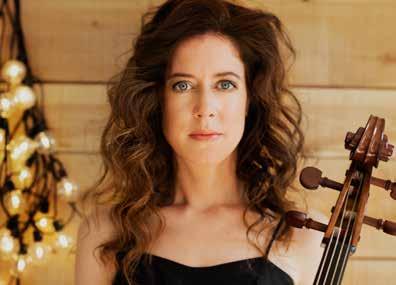
Born in Seattle and living in Montréal, Elinor Frey is a leading American-Canadian cellist, gambist, and researcher. Her albums on the Belgian label Passacaille and Canadian label Analekta – many of which are world premiere recordings –include Giuseppe Clemente Dall’Abaco Cello Sonatas, winner of a Diapason d’Or, and Early Italian Cello Concertos, winner of the 2023 JUNO Award for Classical Album of the Year (small ensemble). Her critical editions of Dall’Abaco’s cello music is published in collaboration with Walhall Editions.
Elinor is the artistic director of Accademia de’ Dissonanti, an organization for performance and research. She has performed throughout the Americas and in Europe in recital and with numerous chamber ensembles and orchestras including the Australian Brandenburg Orchestra, London Symphonia (ON), Orchestre Symphonique de Québec, Symphony Nova Scotia, Rosa Barocca, Il Gardellino, Tafelmusik, and Pacific Baroque Orchestra, among others.
Recipient of dozens of grants and prizes supporting performance and research, including the US-Italy Fulbright Fellowship, a research residency at the Orpheus Institute in Ghent, and a collaborative research project in 2025 with musicologist Nicholas Baragwanath working on using hexachordal solfeggio in practice, supported by CALQ and UK Impact Accelerator grants. Elinor holds degrees from McGill, Mannes, and Juilliard. She teaches Baroque cello and performance practice at McGill University and the Université de Montréal and was a Visiting Fellow in Music (2020–2023) at Lady Margaret Hall, Oxford University. Frey was awarded Québec’s Opus Prize for “Performer of the Year” in 2021.
Elinor Frey will also perform three of J.S. Bach’s Cello Suites for a solo recital on November 18; visit page 66 for details.






Did you know that Western North Carolina’s premier vocal ensemble lives right here in Asheville?
For over 30 years, the Asheville Symphony Chorus has partnered with the Asheville Symphony to bring to life great works from the world of opera, oratorio, and large-scale choral compositions — Carmina Burana, La Traviata, Vaughn Williams’ Sea Symphony, and last year, three sold-out performances of Handel’s Messiah.
In addition to its performances with the Asheville Symphony, the Chorus presents its own programs each year, celebrating choral music from across the centuries and the globe. This year, join the Asheville Symphony Chorus, under the direction of Kyle Ritter, for one — or both! — of our enchanting choral performances.
Visit page 36 for more information on this season’s performances.

For more information on performances, tickets, and auditions, visit AshevilleSymphonyChorus.com.

If pain in your knees, shoulders, hips or other joints has put your life on hold, how many great memories are you missing out on?
At QC Kinetix, we understand how it feels to be held back by chronic pain. That’s why we offer a revolutionary therapy that uses your body’s own healing agents to revitalize damaged joint tissue and restore your mobility and freedom.
Join tens of thousands of satisfied patients who have found relief and regained the life they thought they had lost. To find out if you’re a candidate for this life-changing therapy, call us before you miss out on another great memory.


“I suffered from shoulder pain for 22 years. I couldn’t even brush my teeth without pain. Now I’m pain free and I want to thank you, QC Kinetix.” - Sophia
“This summer, I’ve been fishing, golfing, batting practice. Last year I couldn’t do any of those things. Thanks to QC Kinetix, I feel healthy and happy again.” - Greg

To find out if you’re a viable candidate, request a FREE CONSULTATION today.

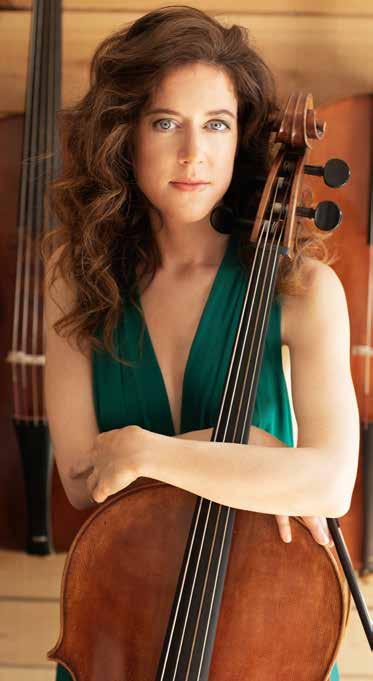
First Baptist Church of Asheville
November 18, 2025

7:00 p.m.
At the heart of the repertoire of nearly all cellists, Bach’s six cello suites are among the most appreciated works of music lovers around the world. The suites highlight how Bach is particularly adept at writing for the cello, an instrument that shares qualities with Bach’s two main instruments: keyboards and the violin.
The cello’s unique range, one that extends from the low bass to the soprano, is a characteristic that helps create the illusion of multiple voices. The inspired polyphony in the suites, created by harmonies and melodies intertwined, showcases Bach’s wonderful compositional techniques that intrigue the ear at every moment.
The suites were probably composed in the early-1720s when Bach lived in Cöthen in the service of Prince Leopold, a time when he composed much secular and instrumental music, including works for solo violin and the famous Brandenburg concertos. It is possible, however, that he finished their composition in Leipzig, where Bach moved in 1723. This is perhaps evidenced by the sixth suite that calls for a five-string cello, an instrument that was also featured in various cantatas, but only after his move to Leipzig.
For our concert, the main source is the manuscript copy of Anna Magdalena Bach, as no Bach autograph copies survive. However, the fifth suite also exists in a version for lute for which we have an autograph score in Bach’s hand. This version, in G minor, provides interesting additional chords and articulations that enhance our understanding of the C-minor cello suite.

Experience the beauty and depth of three of Bach’s Cello Suites in an intimate solo recital. These beloved works come to life in a performance that blends Baroque mastery with emotional nuance, a rare chance to hear some of the most iconic cello music performed with exceptional Baroque insight.

There is no known dedicatee for Bach’s cello suites, although a few musicians in Bach’s circle could have likely played them. Two cellists, Bernard Christian Linike and Christian Ferdinand Abel, also a gambist, moved to Cöthen after the dissolution of the Berlin court chapel around 1713. Abel’s son, Carl Friedrich, became the closest friend and collaborator to Bach’s youngest son, Johann Christian.
Interestingly, many prominent cellists of the time played with an underhand bow grip, as typically used for the viola da


gamba. However, the underhand and overhand bow grips were both used in Bach’s time, as were other non-standardized practices on the cello such as different postures, numbers of strings (5 strings for the Sixth Suite), and tunings. An alternate tuning, or “scordatura,” is used for the Fifth Suite. The cello tuned to C-G-d-g (meaning the top string tuned a whole tone lower than standard tuning) suits the resonances of C minor and harkens to earlier tuning practices in Bologna and elsewhere.
The use of ornamentation in Bach’s suites is a topic of constant debate and changing practices among today’s performers. While many of the more florid ornamental gestures, such as adding typical trills, turns, and harmonic diminutions, are already provided by Bach in the score, there is still ample space for the performer to improvise articulations, further embellishments, tone colorations, and other rhetorically communicative devices.
For music of this era, performers share their unique interpretations with an actively engaged audience. The listener’s familiarity with “Baroque” or “Galant” musical language enhances the communication possible between them. Balancing elegance, clarity, and creative freshness becomes part of the performer’s art.
Musicologist and cellist Marc Vanscheeuwijck, asserts that “in the stylistic languages of early 18th-Century painting, architecture, or literature and rhetoric, stating the obvious is never considered to be tasteful, witty, creative, or even appropriate. Much in the language of late-Baroque ornamentation is anchored precisely in concealing the structure — or delaying the listener’s or viewer’s feeling of gratification or confirmation in order to intensify the pleasure of the unknown — but always maintaining the characteristic Baroque tension between two opposite qualities (the structure vs. the ornament).”
Each suite is ordered with six movements, a Prélude, an Allemande, a Courante, a Sarabande, a set of dance movements (minuets, bourées, or gavottes), and ends with a Gigue. The opening Prélude is designed to introduce the piece and attract the attention of the audience with an improvisatory, instrumental quality.
The major-key suites (Nos. 1 and 3) follow the customary “loosening” of the fingers with arpeggiations, scales, and flourishes. Suite No. 5 follows the form of the typical “French Overture” style, meaning a slow section with characteristic dotted rhythms, followed by a fugue (in the Italian sonata style), and then a return to the slow section, here accomplished by the Allemande itself.
Overall, Bach’s Allemandes demonstrate a dignified and stately manner, suitable for the “entrée” of a “VIP” into an evening’s entertainment. Other movements of the C-minor suite also reflect a more “French” style: the Courante is more majestic and rhythmically complex than the more “running” Italianate counterparts of the other suites, and the C-minor Gigue uses the typical French “sautillant” (skipping) rhythm replete with lively syncopations and hemiolas.
Bach’s Sarabandes manifest a typical early-18th-Century approach to this dance, a dance that was originally sensual and tempestuous, however tamed by the French to be balanced, tender, grave, and ceremonious.
The “gallantries” in each suite, Minuets (Suites 1 and 2), Bourrées (Suites 3 and 4), or Gavottes (Suites 5 and 6), offer a French folk style that delightfully blends both the serious and merry. Lively and rhythmically infectious, the concluding Gigue draws on the spirited character of English and Irish folk dances.
Program notes by Elinor Frey.
J.S. Bach
Solo Cello Suite No. 3 in C major, BWV 1009
I. Prélude
II. Allemande
III. Courante
IV. Sarabande
V. Minuet I/II
VI. Gigue
J.S. Bach
Solo Cello Suite No. 1 in G major, BWV 1007
I. Prélude
II. Allemande
III. Courante
IV. Sarabande
V. Minuet I/II
VI. Gigue
J.S. Bach
Solo Cello Suite No. 5 in C minor, BWV 1011
I. Prélude
II. Allemande
III. Courante
IV. Sarabande
V. Minuet I/II
VI. Gigue
CONCERT SPONSOR
David & Pamela Lane
MUSIC SPONSORS ARE LISTED ON PAGE 100

Visit page 63 to learn more about Elinor Frey and visit page 60 to learn more about her performance with the Asheville Symphony.
PREMIUM SEASON SPONSORS

OFFICIAL HOTEL OF THE ASHEVILLE SYMPHONY



Harrah’s Cherokee Center Asheville ExploreAsheville.com Arena
December 4, 2025 at 7:00 p.m.
Darko Butorac Conductor
Cirque de la Symphonie Guest Artists

with members of the
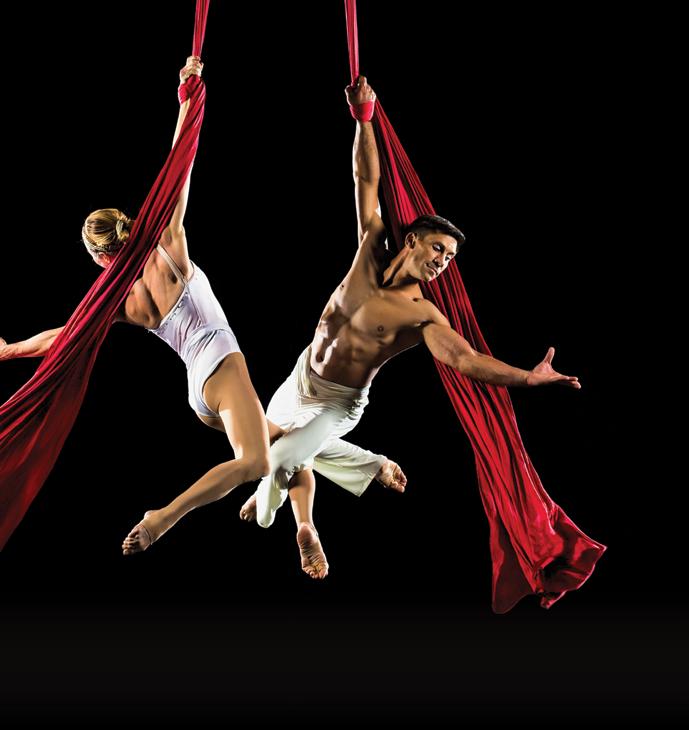
The Asheville Symphony Youth Orchestra (visit page 38 to learn more) and the Asheville Symphony combine forces with the incredible Cirque de la Symphonie for a family-friendly holiday-themed performance featuring beloved holiday and classical tunes from Tchaikovsky, John Williams, Brahms, and much more — all while acrobats perform death-defying feats across the stage.






Cirque de la Symphonie is a unique and exciting production designed to bring the magic of cirque to the music hall. An elegant fusion of cirque and orchestra, the program showcases many of the best cirque artists in the world, thrilling the audience with aerial flyers, acrobats, contortionists, dancers, jugglers, balancers, and strongmen. These accomplished veterans include world record holders, gold-medal winners, Olympians, and some of the most original talent ever seen.
Alexander Streltsov created the concept of cirque paired with symphony in 1998 in a special PBS production with the Cincinnati Pops. Streltsov, a circus veteran from Moscow, is the only aerialist to perform with the Bolshoi Ballet. After winning the gold medal at the prestigious Festival du Mondial in Paris, he starred in a Broadway production. His music and programming sensibilities combined with performance background to provide a program with stunning three dimensional visual and musical elements. Classical masterpieces are perfectly choreographed to the elegant movements of cirque artists, elevating cirque artistry to a fine arts level.
Cirque de la Symphonie performs with dozens of orchestras across North America and beyond each season. Sold-out venues feature a wave of new faces that includes families, students and young professionals, many witnessing a live orchestra for the first time. Something magical happens when these cirque veterans take the stage in front of the live orchestra. Audiences are mesmerized by aerialists flying over their heads. Children are amazed at the wizardry of juggling feats and magic acts. The strength and flexibility of strongmen and contortionists leave audiences astounded. Everyone departs with smiles beaming from their faces.
CONCERT SPONSOR GUEST ARTIST SPONSOR

Jayne Schnaars & Donald Gavin
MUSIC SPONSORS ARE LISTED ON PAGE 100
Leroy Anderson
A Christmas Festival
Johannes Brahms
Symphony No. 3 in F major, Op. 90, III. Poco allegretto
Carlos Gardel
Por una Cabeza
Georges Bizet
L’Arlésienne Suite No. 2, IV. Farandole
Claude Debussy
Clair de Lune
Leroy Anderson
Sleigh Ride
Pyotr Ilyich Tchaikovsky
“Dance of the Sugar Plum Fairy” from The Nutcracker
John Williams
“Flight to Neverland” from Hook
INTERMISSION
Pyotr Ilyich Tchaikovsky
“Danse des petite cygnes” from Swan Lake, Op. 20
Nikolai Rimsky-Korsakov
“Dance of the Buffoons” from The Snow Maiden
Johann Strauss II
Unter Donner und Blitz Polka, Op. 324
Pyotr Ilyich Tchaikovsky
“Trepak” from The Nutcracker
Jeff Tyzik
Chanukah Suite
Traditional O Holy Night
Pyotr Ilyich Tchaikovsky
“Dance of the Reed Flutes” from The Nutcracker
Pyotr Ilyich Tchaikovsky
“Pas de Deux” from The Nutcracker
Traditional We Wish You a Merry Christmas










Celebrate the holiday season with the might and emotional weight of Handel’s iconic Messiah. One of our biggest performances of the season, the Asheville Symphony Chorus (visit page 36 to learn more) shares the stage with four incredible soloists and your Asheville Symphony.




George Frideric Handel (1685-1759) ∙ First half: approximately 57 minutes ∙ Second half: approximately 34 minutes
In a time of trouble, the contemporary historian Charles King turned to George Frideric Handel’s great choral work Messiah in the hope of finding a “healing light.” Five years ago, the world seemed upside down: Politicians were at each other’s throats, the pandemic raged almost unchecked, and then King’s wife suffered a serious illness. Though the historian and his wife were not particularly religious, one night they listened on an old phonograph to Handel’s tenor conveying God’s reassurance, “Comfort ye, my people.” King and his wife burst into grateful tears.
King, a best-selling author and professor of international affairs at Georgetown University, relates this story in his recent book Every Valley: The Desperate Lives and Troubled Times that Made Handel’s ‘Messiah.’ The central idea of King’s superb narrative is that Handel’s Messiah (1742) was not created in idyllic circumstances but in a dark era of much suffering, armed conflict and political turmoil. But the choral work was intended for future generations as a testament of hope amid adversity.
Handel’s Messiah is an affirmation of Christian faith, but King suggests it also conveys an admonition to believer and nonbeliever alike to “live bravely in the face of disaster and defeat.” Handel’s healing light may provide hope and comfort to local communities still suffering in the aftermath of Hurricane Helene.
Messiah is undoubtedly the most often-performed work in the choralorchestral repertoire — and it has maintained that distinction for 280 years. It is an English-language oratorio, a work for orchestra and voices that features a narrative on a religious theme but without theatrical costumes and scenery.
Unlike Handel’s other oratorios and operas, however, Messiah does not have a storyline. It can be considered a reflection or meditation on Jesus Christ’s life, death and resurrection, using texts from the King James Bible and the Book of Common Prayer. The chorus plays a central role, acting almost like a narrator or commentator, similar to the Greek chorus in ancient drama.
The text was compiled and adapted by a wealthy, devout Anglican and part-time poet, Charles Jennens, who often collaborated with Handel and had something of a love/hate relationship with the composer. The moody Jennens, as detailed in King’s insightful book, was not actually impressed with Handel’s music for Messiah! Jennens thought his text had been shortchanged, but he continued to collaborate with Handel. “I must take him as I find him,” Jennens grumbled in a letter to a friend, “and make the best use I can of him.”
Handel composed the three-part work for orchestra, chorus and four soloists (soprano, alto, tenor, bass) in just 24 days, working day and night in a blaze of inspiration. After writing the “Hallelujah” chorus, Handel wrote to a friend, “I think I saw all Heaven before me, and the great God himself.”
(continued on next page)
1. “Sinfonia”
2. “Comfort Ye”
3. “Ev’ry Valley”
4. “And the Glory of the Lord”
5. “Thus Saith the Lord”
6. “But Who May Abide”
7. “And He Shall Purify”
8. “Behold, A Virgin Shall Conceive”
9. “O! Thou that Tellest”
10. “For Behold! Darkness Shall Cover the Earth”
11. “The People that Walked in Darkness”
12. “For Unto us a Child is Born”
13. “Pastoral Symphony” 14a. “There Were Shepherds” 14b. “And Lo! The Angel of the Lord” 15. “And the Angel Said Unto Them” 16. “And Suddenly There was With the Angel”
17. “Glory to God”
18. “Rejoice Greatly”
19. “Then Shall the Eyes of the Blind” 20. “He Shall Feed His Flock / Come Unto Him” 21. “His Yoke Is Easy”
INTERMISSION
22. “Behold the Lamb of God” 24. “Surely He Hath Borne our Griefs”
36. “Thou Art Gone Up on High”
38. “How Beautiful Are the Feet”
42. “He That Dwelleth in Heaven”
43. “Thou Shalt Break Them”
44. “Hallelujah”
47. “Behold, I Tell You a Mystery”
48. “The Trumpet Shall Sound”
53. “Worthy is the Lamb / Amen”


GUEST ARTIST SPONSOR JESSICA BEEBE
MUSIC SPONSORS ARE LISTED ON PAGE 100





Though originally conceived and performed during Easter, Messiah has become a beloved fixture of the Christmas season, as omnipresent as other classic gems of the performing arts such as The Nutcracker ballet and A Christmas Carol on stage. It remains popular at Christmas in the United Kingdom and some countries of continental Europe as well, although Americans often observe one tradition that is almost never seen elsewhere: We stand when we hear the famed “Hallelujah” chorus. That tradition is said to have begun when King George II stood up during a performance of the chorus. However unusual it may be, it’s an endearing tradition — and long may it continue.
Christmastime performances of Messiah focus on Part I, which centers on Old Testament prophecies of the Messiah and the birth of Christ. These performances invariably include a few selections from Parts II and III. “Hallelujah,” for instance, comes from Part II of the oratorio.
Messiah premiered in Dublin in 1742, with a mere 21 choristers and 37 instrumentalists. The performance was a such a success that women were asked to remove their hoops to make more room. But it took more than 75 years for the work to make its way to the United States, with the Bostonbased Handel and Haydn Society giving the American premier in 1818. That group arguably influenced the Christmastime preference for Messiah. The still-thriving Handel and Haydn Society has performed Messiah every Christmas since 1854. That’s 171 consecutive years so far.
The “Hallelujah” chorus may be the best-known piece in Messiah, but other iconic moments stand out as well. Here are a few:
» “Comfort ye, my people” (Tenor Recitative): Opens the oratorio with a lyrical and gentle tone, introducing the idea of redemption.
» “And the Glory” (Chorus): The first chorus number is a jubilant exclamation.
» “And He Shall Purify” (Chorus): A bright, uplifting chorus with spirited vocal runs.
» “For Unto Us a Child is Born” (Chorus): A rapturous announcement of the birth of Jesus that starts quietly and builds up to the climatic “Wonderful, Counselor.”
» “Rejoice Greatly” (Soprano Solo): A highly ornamental aria for soprano.
» “The Trumpet Shall Sound” (Bass Aria): A triumphant aria anticipating the Resurrection, featuring brilliant trumpet writing.
Handel is particularly skilled in tone painting, using atmosphere and specific musical gestures to emphasize the meaning of the text. The tenor aria “Every Valley Shall Be Exalted,” for example, features a rising melodic line to symbolize God exalting the humble and descending scales to represent God humbling the proud.
chorus “His Yoke Is Easy” is anything but easy for the singer.
Indeed, despite the abundance of Messiah performances nationwide, the oratorio is a challenging work for performers, with complex vocal runs, intricate fugues, and demanding passages for both soloists and chorus. Because choral groups, such as the Asheville Symphony Chorus, are often made up of volunteers, a Messiah performance often requires several weeks of diligent preparation.
Particularly challenging for vocal soloists and a chorus are Handel’s ornamental musical lines sung on one syllable — known as melismas. As Handel moved away from composing operas (he wrote 40 of them), he often brought his opera techniques to oratorios, including his love of ornamental arias and choruses.
Messiah may even be getting more difficult to perform with each passing year: Musicologists have noted a tendency among conductors to adopt faster tempos when performing Messiah today than in decades past. That trend, many argue, has been driven by the historically informed performance movement that aims to recreate the sound and style of music as it might have been heard in the composer’s time. Concert-goers thus have all the more reason to appreciate a fine performance of the challenging work.

Throughout the years, ensembles of all sizes have performed the work. In Handel’s time, ensembles would be rather modest in size. In the 19th and 20th centuries, however, the combined forces tended to be larger, sometimes gargantuan. At the 1857 Great Handel Festival in London’s Crystal Palace, a Messiah performance featured a chorus of 2,000 and an orchestra of 500.
The trumpet-tinged chorus “Glory to God in the Highest” has singers reaching to the top of their range on the word “high.” The poignant chorus “Surely He Hath Borne Our Griefs” features striking dissonance to represent the sufferings of Christ.
One of the best-known examples of Handel’s tone painting occurs in the chorus “All We Like Sheep,” in which the composer sets the phrase “All we like sheep have gone astray” to wandering, meandering musical lines, imitating sheep straying. It’s a witty moment in a solemn work. There are inside jokes as well: The
Handel’s Messiah endures not just because of its musical brilliance, but because of the spiritual, emotional, and communal resonance it has maintained for nearly 300 years. Messiah transcends time, doctrine, and performance tradition as both a personal devotional work and a public musical celebration.
Program notes by Paul Hyde © 2025
Paul Hyde, a longtime arts journalist, is an English instructor at Tri-County Technical College in South Carolina. He writes regularly for the Greenville Journal, the S.C. Daily Gazette, EarRelevant, ArtsATL, and the Atlanta Journal-Constitution. Readers may write to him at pah598@g.harvard.edu.




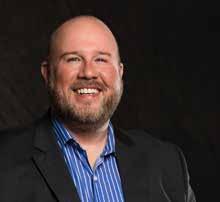

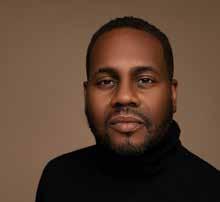
Lauded by Opera News as “evocative and ethereal,” “a honey-colored tone,” and “the most radiant solo singing,” soprano Jessica Beebe is steadily gaining international attention as an affecting interpreter of repertoire spanning over four centuries, ranging from Renaissance music to contemporary American opera. In recent seasons, she has appeared as a guest soloist in concert with The New York City Chamber Orchestra at Carnegie Hall, The Los Angeles Philharmonic at Walt Disney Hall, and more. In the realm of opera, Ms. Beebe has performed a variety of roles including Barbarina in Le nozze di Figaro, Zerlina in Don Giovanni, Despina in Così fan tutte, and more.
Countertenor Clifton Massey’s career spans an expansive repertoire, with a focus on the music of Bach. With “a voice that has a truly unique, special quality,” he has performed as a soloist in the St. Matthew and St. John Passions with Trinity Church Wall Street, the Christmas Oratorio at the Oregon Bach Festival, over 60 cantatas, and more. He is a frequent soloist in New York’s “Bach at One” and Bach Vespers series. An accomplished chamber musician, Clifton has collaborated with ensembles including Apollo’s Fire, Voices of Ascension, Washington Bach Consort, and more. As a member of the GRAMMY-award-winning group Chanticleer, he sang over 200 concerts in major venues spanning the globe.
Lauded for his stylish interpretations of early music, Jacob Perry lends his graceful sense of phrasing and luminous tone to engagements with American Classical Orchestra, Apollo’s Fire, Bach Collegium San Diego, Philharmonia Baroque, Portland Baroque Orchestra, the Washington National Cathedral, and more. In 2024, he was nominated for a GRAMMY award as a soloist on a recording of Handel’s Israel in Egypt with Apollo’s Fire. Career highlights include his recent solo debut with the New York Philharmonic singing Handel’s Israel in Egypt, headlining the inaugural festival of Western Early Music at the Beijing Central Conservatory of Music with Les Canards Chantants, and English Orpheus.
Kenneth Overton is lauded for blending his opulent baritone with magnetic, varied portrayals that “emanate from deep within body and soul.” His symphonious baritone voice has sent him around the globe, making him one of the most soughtafter opera singers of his generation. He is a 2020 GRAMMY-Award winner for Best Choral Performance in the title role of Danielpour’s The Passion of Yeshua with the Buffalo Philharmonic Orchestra and Chorus. This season, Overton will reprise his most celebrated role of Porgy in Porgy and Bess with Opera Carolina and North Carolina Opera, lead two productions with the Welsh National Opera(the new work Migrations, and the world premiere of The Shoemaker), and much more.

















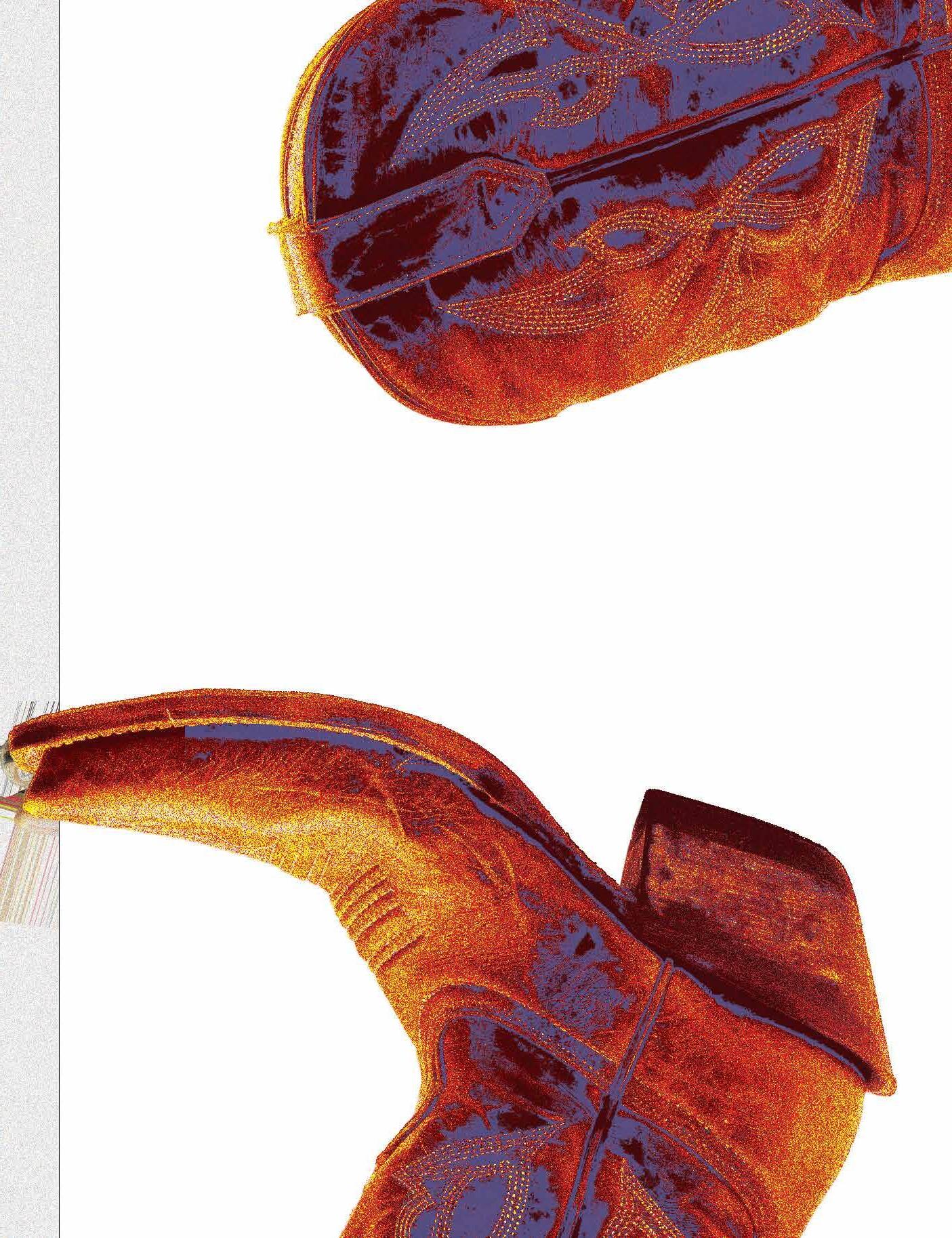
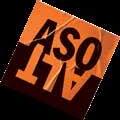






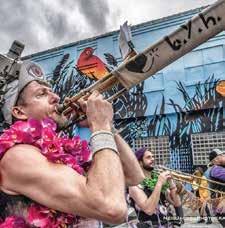
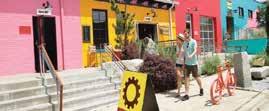






























APPLAUDS THE ASHEVILLE SYMPHONY
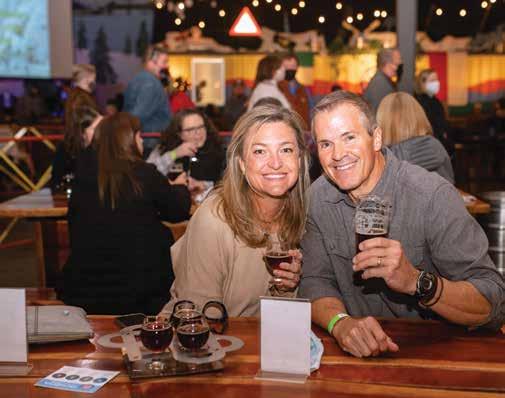


Experience Grammy, Tony, and Emmy-winning artists, global artistry, daring dance, and music legends.
Highlights include: PILOBOLUS
Oct 10 & 11 A SWANNANOA SOLSTICE
Dec 21
The Acting Company presents A MIDSUMMER NIGHT’S DREAM • Jan 23
GREAT EXPECTATIONS • Jan 24
AILEY II THE NEXT GENERATION OF DANCE
Feb 17 & 18
JANE LYNCH & KATE FLANNERY
Mar 3
NICOLE ZURAITIS 2X Jazz Grammy-winner
Mar 4
ALL THINGS EQUAL: THE LIFE & TRIALS OF RUTH BADER GINSBURG Sponsored by Roberts & Stevens, P.A. Mar 26 & 27
BREABACH Apr 11
STEWART/OWEN DANCE + GUESTS
May 1 & 2


Mar 13 & 14




A Celebration of Voice with Isabel Leonard





Voice Recital with Isabel Leonard
Tuesday, March 17, 2026 at 7:00 p.m.
First Baptist Church of Asheville
Accompanied by pianist John Arida, Isabel Leonard presents an intimate recital featuring selections by García Lorca, Montsalvatge, Bizet, traditional Spanish songs, and more. Experience the passion and poetry of vocal music through the artistry of one of today’s most sought-after performers.
Masterworks 5: Nightingale
Saturday, March 21, 2026 at 2:00 p.m. + 8:00 p.m.
First Baptist Church of Asheville
This centerpiece of the residency celebrates the full range of Leonard’s talent and the expressive potential of the voice. From Samuel Barber’s nostalgic Knoxville: Summer of 1915 to highlights from West Side Story, the program also includes works by Bizet, de Falla, Gabriela Lena Frank, and more.
ASYO Performance
Monday, March 23, 2026 at 6:30 p.m.
Asheville High School Auditorium
As part of her residency, Isabel Leonard will also appear with the AshevilleSymphony Youth Orchestra, offering young musicians the unforgettable opportunity to perform alongside one of the world’s greatest vocalists.

Three-time GRAMMY Awardwinning artist Isabel Leonard is one of today’s most in-demand performers, equally at home on the world’s grandest opera stages and in intimate recital settings. Known for her nuanced storytelling and rich vocal tone, Leonard’s career spans major roles in Carmen, Der Rosenkavalier, West Side Story, and La Cenerentola, among many others. In addition to her global opera appearances, she is a celebrated recitalist, crossover collaborator, and a passionate advocate for arts education.

Asheville Symphony’s Artist Residency is made possible through the generous support of our community. If you’re inspired by this initiative and want to help bring more world-class artists to Asheville, consider joining the Artist Residency Circle or becoming a Residency sponsor.
Contact the Asheville Symphony’s Development team at 828-820-2520 or development@ashevillesymphony.org for more information.

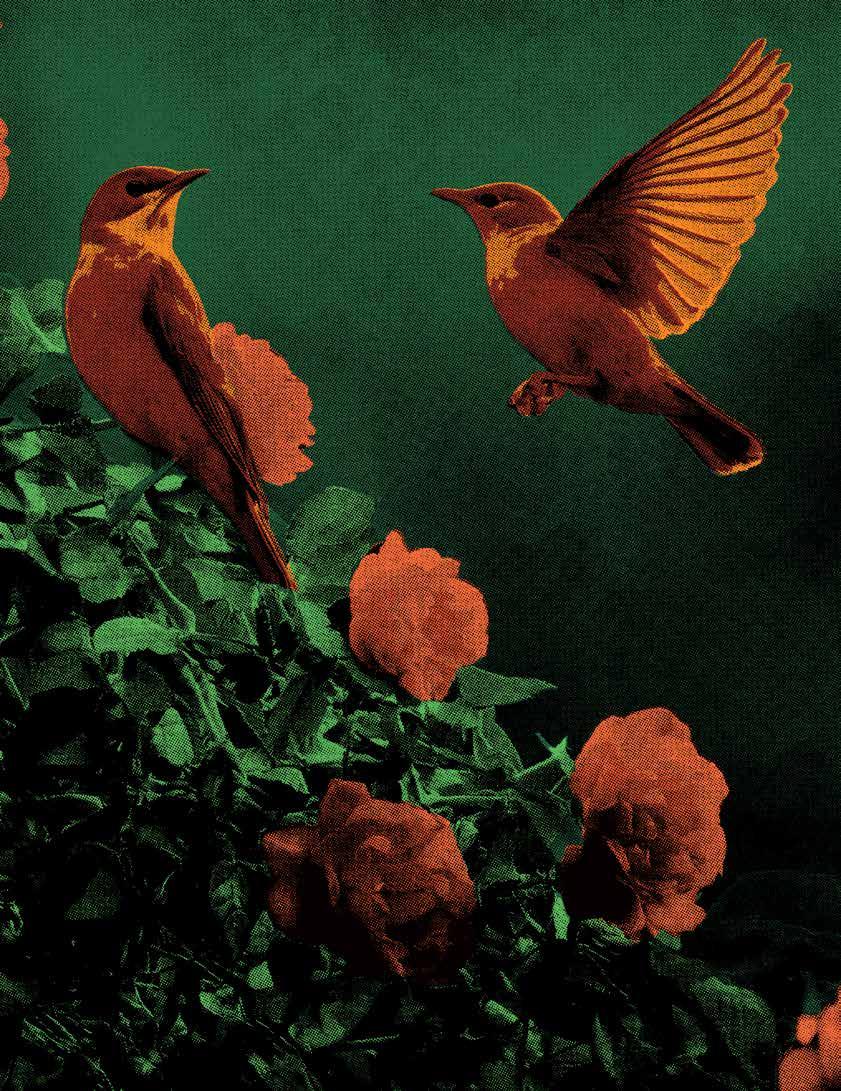






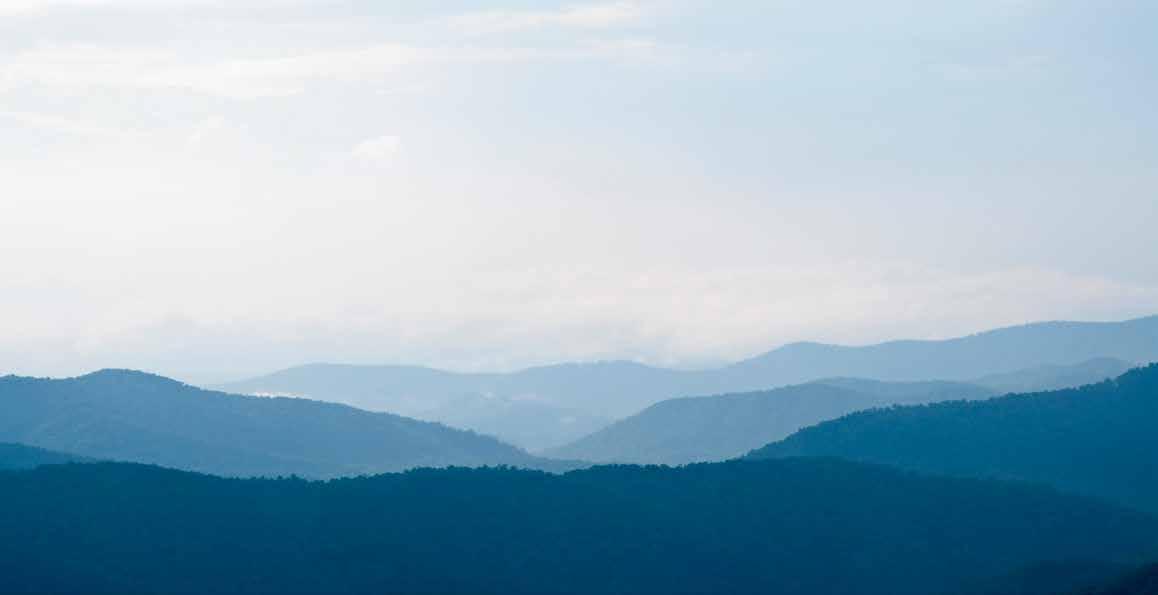

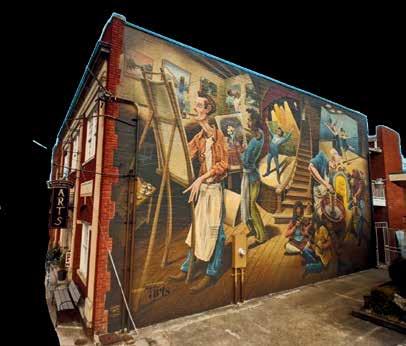









Here’s how we make music with your dollars:
$50
$170
Covers the music for one Asheville Symphony Youth Orchestra Honors Strings Ensemble performance
Covers the cost of orchestra folders for ten Asheville Symphony Youth Orchestra students
$450 Pays for one Music in the Schools program (one quintet, one school, one hour)
$750
$1,300
Allows us to offer one masterclass for emerging young musicians with an esteemed guest soloist
Covers the cost of one Asheville Symphony Youth Orchestra student’s participation throughout the school year, including tuition and other program expenses
$5,000 Allows for one workshop for the Asheville Symphony Youth Orchestra
$10,000 Pays the fees and travel for one guest soloist

$40,000
Covers the cost of presenting one Young People’s Concert for Asheville City’s and Buncombe County’s fifth graders


The Asheville Symphony recognizes the following organizations whose generous commitment to the arts in WNC enables us to present top-quality concerts and music education programs in our 2025-2026 season:





PREMIUM SEASON SPONSORS

$25,000+



This project was supported by the North Carolina Arts Council, a division of the department of Natural and Cultural Resources.
$15,000+


$10,000+
























Every Asheville Symphony performance represents an opportunity for meaningful connection with a multigenerational audience of more than 45,000 individuals per year. When you partner with the Asheville Symphony, you support our mission to transform lives with the power of music while engaging with business leaders, community advocates, and local decisionmakers who recognize the organizations that invest in our community’s artistic ecosystem.
Corporate and business sponsorships provide vital support through a variety of dynamic funding opportunities that enable our artistic, community outreach, and music education programs.
Partnering with us will enable your company to:
• Increase brand awareness
• Receive complimentary tickets and discounts
• Entertain clients and reward employees
• Enjoy access to Asheville Symphony artists, leadership, and guest performers
• Market your company in creative ways

Contact the Development team at 828.820.2520 or development@ashevillesymphony.org to learn more about how a partnership can achieve your organization’s goals while strengthening our community’s cultural fabric. We look forward to customizing a sponsorship package that maximizes your impact.
















FALL
Warren
SPRING
First
Please












Contributions to the Asheville Symphony support our artistic and educational programming — everything from the music performed on stage by our highly trained and talented musicians to the education programs our musicians implement when visiting local elementary schools.
You can choose how to direct your support:
• Annual Fund
• Sponsorship
• Artist Residency
• Asheville Symphony Youth Orchestra
• Music Education Initiatives
• Endowment
The following recognition encompasses contributions made from January 1, 2025 through July 31, 2025, including support from the 2025 Asheville Amadeus Gala.
$50,000 - $99,999
Asheville Symphony Guild
Dr. E. Brown Crosby
Bill and Nancy Gettys
Flow Volkswagen Porsche Audi of Asheville
iHeart Media
John and Carol Jackson in honor of Doris Harwitz
Kimpton Hotel Arras
Drs. Joanne and Tom Parker
$25,000 - $49,999
Thomas C. Bolton
Lynne and John Eramo
Keith Keener
Jim and Mary Kirby
Henry A. LaBrun
North Carolina Arts Council
Northwestern Mutual: Marlowe Pasarilla
Wealth Management Group
Kevin Pasarilla and Jennifer Marlowe
The Payne Fund
Sarah Van Gunten
Olivia and Gary Zahler
$15,000 - $24,999
Michael and Catty Andry
Sean and Erika Comeaux
Explore Asheville
Givens Communities
Hatchworks Coworking
Gerald and Nancy Kitch
David and Pamela Lane
Amy Loether
Morgan Stanley Private Wealth Management: The Andry / Harris Team
Tony McLean Brown and Kelli Darlin
Penley Produce Vacation Homes
Jayne Schnaars and Donald Gavin
Travis Worl & Richard Lindau


$10,000 - $14,999
Craig Allen and Julie Cowden
ArtsAVL
Audrey Love Charitable Foundation

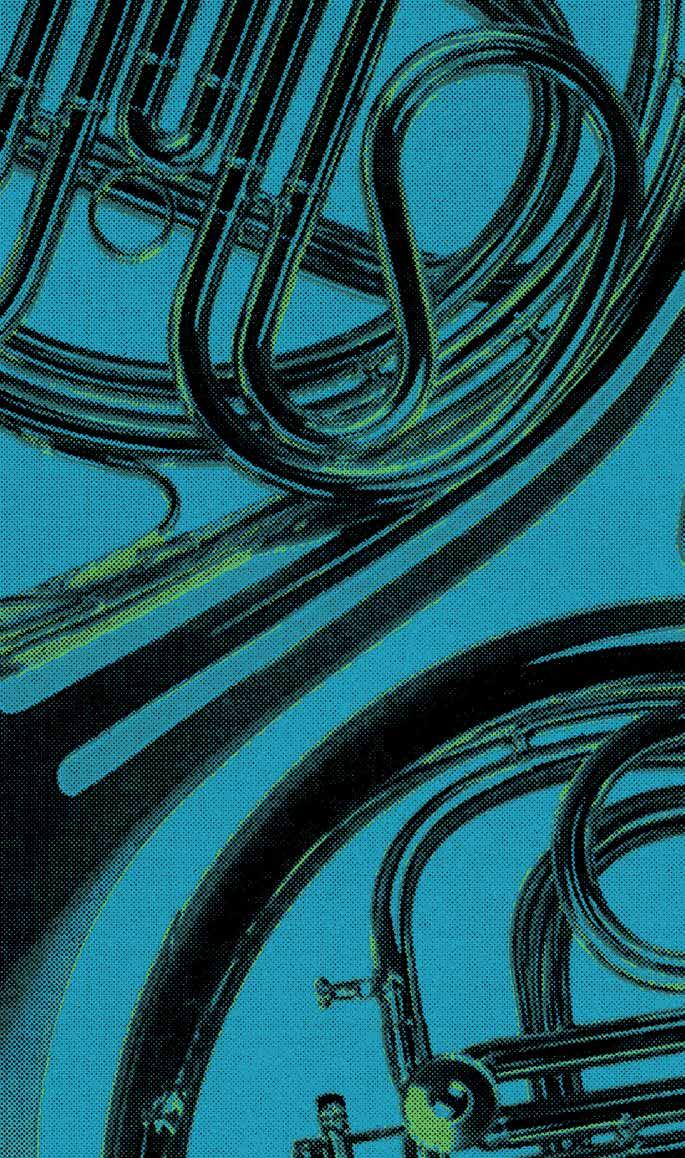

Rich and Diane Byers
Chaddick Foundation
Dr. Bolling Farmer
John and Suellyn Felker
Paul and Patty Gaumond
Helle Creative
Randall and Mary Johnson
Barbra and Keith Love
Phil and Katie Osborn
Bob and Martha Pierce
Ralph Protsik and Susan Wolin
QC Kinetix
Richard Schaffer and Anastasia Bartlett
Bill Schulz and Odile Perrenoud
Ed and Cindy Towson
David and Dianne Worley
$7,500 - $9,999
Mary and Jack Anderson
Nancy and Ron Edgerton
HomeTrust Bank
Dr. and Mrs. Ralph C. Loomis
McGuire, Wood & Bissette
Russell and Ladene Newton
Roberts & Stevens, P.A.
Thomas G. Tachovsky and Lynn G. Baird
Gary and Neesa Warlen
$5,000 - $7,499
Brad and Diane Arnold
Awaken Skin & Body Bank of America
Diana Bilbrey
Blue Spiral 1
Beverly Briedis
Buncombe County
City of Asheville
Clover CBD Dispensary
Dr. John and Mrs. Wendy Cuellar
The Community Foundation of Western North Carolina
George and Kathy Dambach
Robert & Mercedes Eichholz Foundation First Bank
Adarrell Gadsden and Marcie Ownbey
Highland Brewing Company
Mountaine Jonas
Kathryn Theodore Travel Advisors
Jon and Ann Kemske
Jill and Joe Lawrence
Margarete W. Moon Endowment of The CFWNC
Robert Maxwell and Shelia Elingburg
The Matt & Molly Team
Carol and Hugh McCollum
Mercy Urgent Care
Kathryn and Peter Muhs
National Endowment for the Arts
Nova Kitchen and Bath
Publix Super Market Charities
Dr. Rachel E. Raab and Dr. Francois Archambault
B.A. and Gary Schenk
Dr. Tony Sciara, Ph.D and Dr. Jill Vargo
James S. Thompson
$2,500 - $4,999
The Brookshire Garside Group of BAIRD
Meredith Balgley and Erik Bendix
Lucy and Kirk Borland
Ed and Donna Broadwell
Crawley, Lee & Company, PA
Jerry and Diane Cunningham
John and Suzie Donahoe
Betty Fox
Anne Gatling
Peter and Jasmin Gentling
Debbie Green
Rhonda and Marcus Grimes
Fred and Cindy Groce
Richard and Yolanda* Hall in memory of Rikki Hall
Paul and Liz Hosier
Anne Jarema and Clifford Albertson
John and Janet Long
Carolyn Marlowe
Ann and Jerry McLellan
Gail Reagan and Jim Graham
Jim Reeves
Susie and John Ruhl
The Sabri Foundation
J. Howard and Honey Solomon
Irene and Michael Stoll
Alan and Kathleen Young
Hank Young
$1,000 - $2,499
Anonymous
Mike* and Lorna Anderberg
David and Sydney Atkinson
Mr. and Mrs. Robert T. Bayer
William Bond and Johnny Ko
Claude and Sallie Broach
Buster and Karen Brown
Bill* and Clarita Burton
Linda Bushar
Timothy Butts and
Susan Harrington Butts
Amy Campbell
Georgia Case
Gene and Lee Casey
Gary and Patty Coleman
John and Jeanne Condren
Virginia Craig
Daniel and Caroline Crupi
Darilyn Dealy and Lee Pagel
Jurgen and Leslie Dierks
Karen Dugas
Jan Duwelius
Patricia Eargle
Richard and Bridget Eckerd
John and Marsha Ellis
Dr. Alan and Suzanne Escovitz
Susan Fisher
Elaine and Michael Fulbright
Scott and Sally Gregg
Clementine Gregory
Clair Griffith and Geoffrey Mitchell
Stephen Griffith
Michael J. Grillot
Dr. and Mrs. Heinz K. Grohs
Virginia W. Hayes
Jennine Hough
Fred and Heather Hudson
Barbara and Bill Hume
Bill and Kitty Hunt
Judy and John Johnston
Suzanne Jones
Bebe Landis
Susan and David Leader
Tom and Dian Leeper
Rita Lenderman
James Losse and Ellen Haack
Sue and George Luther
Linda Lutz and Gary Ticknor


Cynthia MacLeod
James H. McMillan and Carol H. Kaufman
Roberta Moll
Lois S. Carlson and Jerome Mrowca
Barbara Mueller
Lucille Mueller
Jeffrey and Lisa Owen
Dale and Barbara Phipps
Pam and Rex Prosser
Irene Dillingham Richards
Family Foundation
Robin T. Rutledge and Karen Keeler Rogers
Wade and Mary Margaret Saunders
Larry and Marilyn Shames
Edward Sims
Mark and Rachel Sossoman
Evelyn Spies
Gary and Jeanne Ann Stroebel
Cathy Stryker
Judith Van Horne and Stephen Hendricks
Paul and Valorie Vliek
Betty Walker
Steven and Michele Warner
Gregory and Marjorie Zack
$500 - $999
Anonymous
Claude and Sallie Broach
Elizabeth Button
Lynne Cannady
Jeannette and Robert Cannon
Todd and Paula Clossin
Joel and Carole Hampton Cotter
Ellie Daniels
Mary Ellen Dendy and Aaron Dahlstrom
Kristen Dusenbery
Drs. Louis Dwarshuis and Marilyn Kolton
Brad Edmonds
Bruce and Day Ann Emory

Carol Falender
Betty Gumpert
Tom and Libby Irwin
Pat Johnston
Elizabeth Justice
Sean Kelley
Pat & Bud Kofron
Bebe Landis
Virginia and Drew Litzenberger
Chuck Lockwood and Patrick Ryan
Henry and Elizabeth Mainwaring
Gail and Ron Manheimer
Diane and John Martin
Ricky McGrath
Anne McKenzie
Leslie Newman
John K. Orr
Amy Plankenhorn
Julene Reese Roberts
Kitti Reynolds
Rich and Stacy Ridenour
Brent and Lee Ann Russell
Frank Rutland
William and Martha Scarborough
James Storey and Janice Collins
Carol and Terrence Tinkel
Dr. Larry R. Versteegh
Donna and Randy Weast
Jeff and Susie Wellington
Bonnie Wheeler
George Wilds and Steve Connell
Paul Williamson
Thomas H. Young
$250 - $499
Anonymous
Altura Architects
Joseph Beckham
David and Ann Bottomy
David G. and Lin Brown
Bob and Bonnie Busby
Gary Clark
Michael Cleveland and Maria-Grazia Nunzi
Bill and Meg Clontz
Gerald Davies
Daniel Durand
Kim Eiring
Polly S. Feitzinger
Milton and Murphy Fletcher
Lauren Flickinger
Mrs. Edeltraut Gilgan-Hunt
Lorraine Harrison
Peter Wortham Hawes
Sara Y. Henley
Joel Horwich
Robert Stone and Jan Hundhausen
Marian and Thomas Jerdee
Margaret Kelso
Elfi LaPlante
Pamela Lowe-Hoyte and Otho Hoyte
Karen Medeiros
David Miller
Martha and Thomas Mills
Barbara Phelan
Vicki Richards
Don Roberts
Carol and Michael Rosenblum
Cristian Rubiano
David Russell
Richard Schaffer, Sr.
Ilona and Michael Sena
Robert Stone and Jan Hundhausen
Stephen and Lynne Weinrib
Andy and Betsy White
$100 - $249
Asheville Alumnae Chapter of Sigma
Alpha Iota
Bill and Sally Atkins
Don Bafford
Shannon Baggett
Paul Ballard
Tom and Kay Beardsley
Marty and Barbara Beckerman
William Berenson
Drs. Elizabeth and Josh Bernstein
Adlai and Karen Boyd
Richard Brandsma
Rita Nilsen and Carl Brickman
Allan and Jean Brown
Dr. Stephen D. and Mrs. Linda B. Brown
Clinton Bugg and Jeff Nucey
Jane Caris
John and Gail Carpenter
Charles Baker
Bishop Charles and Karen Crutchfield
Mary Cunningham
Alexa and Rich Dann

Martin and Ivy Dyckman
Linda Engwall
Don and Joy Erbes
Edward and Amy Euler
Laura Evans
Your gift to the Asheville Symphony’s Annual Fund makes a difference in our community.
A donation to your Symphony makes it possible for you to be a part of the magic that happens in our Masterworks series at First Baptist Church of Asheville and all across our region throughout the year. Ticket and subscription sales cover about 35% of our operating costs, and contributions to the annual fund make up the difference.


Your donation, no matter the size, directly supports our mission and helps us reach even more people. To learn more about Annual Fund giving, contact the Development office at 828.820.2520 or development@ashevillesymphony.org. Visit AshevilleSymphony.org/ Donate to make gift today.






Cary and Koni Findlay
Stephen and Jackie Finstad
Gayle Freeauf
Ellenor Frelick
Michael Groothuis
Carolyn Guthrie
Amanda Hall and Robert Zeid
Caprice Hamlinkrout
Gail Harris and John Boneparth
Ralph and Sheryl Husby
Thorunn Ivey
Nan Jackson and Heinz Sauer
Susan Jensen and Lew Gelfond
Edward Joffe
Ruth Sieber Johnson
Christopher Keene
Donald Kehrberg
James King
Mr. and Mrs. Lawrence Koupal
Karen Lachow
Eric and Mala Lapp
Walter Leginski
Deborah Lewis
Barbara Loeb
Dr. Ken and Mrs. Marjorie Loken
Rev. Alexandra Lusak
Shane and Sarah Lympany
Suzanne and Jay Mahler
Jerry McAninch
Robert Moench
Mr. and Mrs. George Morosani
Gina and Dale Nelson
Thomas Norman
Francis Nullet
Many companies offer a matching gift program for employee (and retiree!) charitable donations — this can double or triple your gift! Thank you to the following companies who have recently matched donor gifts:
AIG
Bank of America
Boeing
Steelcase Foundation
Shell Oil Company Foundation
Christopher Okopny
Eric and Lynn Ordnung
Betty J. Paine
Virginia Pett
Barbara Pettigrew
Donald and Brenta Poole
Kathleen Quinlan and Marc Parham
K. Ramaswamy
Lynnell W. Reese
Richard and Deborah Reynolds
Sherree Roller and David Janson
Liz Rollins
Evan and Susan Rosenberg
Stephanie Rosener
Jeffrey and Bea Russell
Bob Rymer
Barbara and Marty Stickle
Kathy Stiles
John and Mary Tadey
Janet Thatcher
Kathleen Busby and Razz Waff
Norman and Janet Weeks
Larry and Janie Wilson
Christy Winer
Barbara Witt
$1 - $99
Deborah Aiton
Roger Ames
Margot Ammidown
Pauline Aridas
Catherine Ashe
Charles and Stephanie Baer
Jeff and Elizabeth Baker
Sherry Banner
Kate Bashford
Gregory Bergee
Fernando Bertoli
John and Roberta Birken
Diego Blanc
Elinor Bowman
Hannah Boyd
Art Brantigan
Diana Brewster
Howard Brodt
Catherine Brown
Sheryl Brown
Melinda Brown
Joe Bruen
William Buchanan
Nancy Buchanan
Lee Buckley
Julie Burch
Lana Burns
Chris Bussa
Christine Calso
Casey Campfield
Catherine Anne Walsh
Alexis Champion
Kyle Chapin
Horace Clark
Boyd Clines
Marvin Cole
Tracy Conte
Charlotte Cooke
Dayton Costlow
Patti D’Angelo
Tala Dajani
Lisa Darling
Johnny Davis
Katherine DeGroff
Robert Delfoe
Gary Demyan
Tom Doebber
Amy Dragon
Betty Duggan
Ramon Duque
Gary Eiben
Kyle Eliason
James Ellis
Laura Fackler
Russel Fallis
Thomas Ferguson
Mercedes Field
Katherine Fisher
James and Linda Focareto
William Forrester
Chris Foster
Deborah Francis
Francois Archambault
Linda and Jeffrey Fromson
Jonathan Gaines
Robin and Gordon Gaiser
Vinnie Gibaldi

Brandi Gilliland
Linda Gilpin
Chowdhary Gondy
Adam Griffith
Darrell Grigsby
Steve Grimes
Dante and Cindy Gumucio
Xinni Guo Household
Stanley H
Wayne Hadler
Teresa Hammack
Robert Hammet
Charles Hardy
Diane Hardy
Gretchen Hardy
Michael Hart
William Hasskamp
Daniel Hatton
Sherry Heacock
Tami Hindin
Philip Hogue
Kathleen Holmes
Michael and Laura Hoskins
E. Paul Huisking Jr.
Gavin Iddings
Jody Jacobs
Alisha Jamerson
John Johnson
Ginger and Dan Jones
Rebecca Jones
Geoffrey Kapler
Sharon Kaufman
Kelley Hinsley
John Kennedy
John Kenney
Arthur Kirby
Julie Klement
Deborah Klopp
Linda Kooiker
Alan Kotch
Margaret Krusch
Renee Lampila
John Law
Lynn Lederer and Leslie Long
Jeremy and Susan Lerner
Amy Little
Thomas E. Lodge
Kathryn Long and Axel Graumann
Beatriz Lothrop
Elizabeth and Greg Love
Carol Marin
Canter Martin
Adam Matar
Don McAdam
Bill McClain
Jim Messer
Michael Miale
Douglas and Jill Miller
Swig Mueller
Eric Munoz
Amy Murashige
Dagi Murphy
Judy Murren
William Mustelier
Joanne Neary
Frederic Nguyen
Reyna Novak
Reed Olszack
John Onestinghel
Marcy Onieal
Rebecca Pace
Travis Peck
Virginia Pena
Lynne Petty
Kert Phillips
Rachel Phillips
Todd and Kaye Phillips
William Pope
Mark Potts
Bradley Preslar
Allison Quigley
Carolyn Ramsey
Philip Ramsey
Robert Randall
Carlos Reyes
Amanda Ridenhour
Ellen Robbins
Robert Pechacek
Thomas Roman
Christopher Rupp and Karine RuppStanko
Megan Santana
Kevin Scanlon
Wade Scheuritzel
Allen Sebrechts
Angela A Sherzer
Michael Sierra
Joseph Simpson
Ronald Sinclair
David Slobodin
Jillian Smith
Brian and Caron Smith
Carole Sorrenti
Hannah and Matthew Spear
Olga Spirina
Jeremy Spurlin
Charles and Sue St. Clair
Barbara and Barry Stagg
Kathleen and Howard Stanton
Edmund Starowicz
John R. Sterling
Mark and Cathy Stevens
Beth Stickle Schoenheit
Paul Stroebel
Thomas Stultz
Kenny Sudnik
Colleen and Jimmy Sullivan
Alina Suprunchik
Thomas Swaney
Anita Szybillo
Trisha Taris
Sandra Tart
Paige Taylor
David Treadway
Diane Turpin
Molly Von Mitschke-Collande
Douglas Vonada
Margot Voorhees
Charles and Marjorie Waddell
David Waldron
Virginia Waymouth
Melanie Welty
Terence Whitt
David Willette
Alexander Wilson
Theodore Woolsey
Don Wright
David Wulle
Susan Yost
Michael Zabel


Masterworks 1: Eroica
Masterworks 2: Convergence
Masterworks 3: Renegade
Bach Cello Suites with Elinor Frey
Cirque de la Symphonie










In memory of Michael Anderberg
Lorna Anderberg
In memory of Chuck Briedis
Beverly Briedis
In memory of Bill Burton
Jack and Mary Anderson
In memory of John B.
Campbell
Amy Campbell
In memory of Lindley Garner
Mary Goodkind
To honor the kind memory of Kent Gatling and in gratitude for his generous shared gift from his wife Anne Gatling
Caprice Hamlinkrout
In memory of Al Gumpert
Jack and Mary Anderson
In memory of wife Yolanda Hall
Richard Hall
In memory of son Rikki Hall
Richard Hall
In memory of Carole’s brother, Wade Hampton III
Joel and Carole Hampton Cotter
In memory of Gail Jolley
Keith Keener
Betty Walker
In honor of Franklin Keel
Beverly Briedis
Ellie Daniels
In memory of Linda and Manny Medeiros
Estate of Manuel Medeiros
In memory of Manny Medeiros
Karen Medeiros
In memory of Ingeborg Meeke
Irene and Michael Stoll
In honor of Phyllis Penley
Patton
Kelli Darlin and Tony McLean
Brown
In honor of my Students
Paul Stroebel
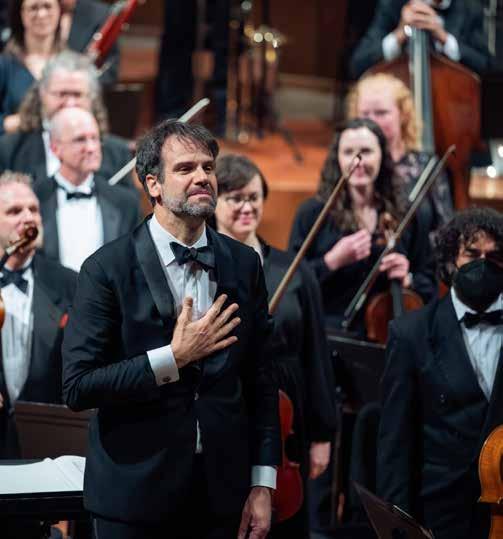
Thank you for being part of what brings the concert hall to life and builds memories for audiences for years to come.
Your support in action in the 2024-2025 season:
• Welcomed an estimated 10,000 guests at a free Symphony in the Park in Downtown Asheville
• Served thousands of Asheville City and Buncombe County elementary students with music education programs
• Provided nearly $15,000 in scholarships to young musicians in the Asheville Symphony Youth Orchestra
• Distributed over 1,500 complimentary tickets to students, families, and seniors who otherwise might not have been able to attend

Our partnerships with senior living communities, public libraries, and outreach initiatives ensure that music reaches every corner of our city. Whether on stage or in our communities, music brings us together — lifting our spirits, connecting generations, and strengthening the fabric of our community.

This is one of the best ways to invest in the future of kids in Asheville and what music can do for them. It’s a legacy that will have benefits far beyond our lifetimes.
JOHN CUELLAR Legacy Society Member & Board Member





When Dr. John Cuellar attended the Asheville Symphony’s performance of Carmina Burana several years ago, little did he know that it would lead to an on-going, years-long commitment to the symphony. Awe-struck by the performance, he called the Symphony office the next morning and purchased season tickets. He has subscribed ever since.
John’s love for classical music was instilled in him as a child, attending concerts with his mother in Texas. “We weren’t wealthy, and music lessons were beyond our budget, but my mother loved classical music,” he recalls. “Hearing amazing musicians as I grew up made a lasting impression on me. I’ve had the good fortune to see and hear wonderful symphonies and performances across the country since.” John’s passion continued with the Asheville Symphony after his move here.
At one particular Asheville Symphony Annual Meeting, John stood up and spoke, sharing his admiration for the organization’s exceptional music and leadership, “The quality and musicianship in a city of this size was striking.” Shortly after, board member Jack Anderson invited him to lunch along with Steve Hageman, then executive director, and John was asked to join the Asheville Symphony’s board.
Youth Orchestra, playing bassoon. “Music became her community,” John explains. She went on to study Music Therapy at Appalachian State University and now works as a music therapist at a children’s hospital. Seeing firsthand how music shaped their daughter’s life led John and Wendy to think about the future.
“The developmental data on children who play music is impressive, and we’ve seen firsthand what music can do for kids,” he shares. “It motivates them, teaches them skills they can carry throughout their lives, and creates opportunities they might not otherwise have.”
for them,” John says. “It’s a legacy that will have benefits far beyond our lifetimes.”
The Asheville Symphony Legacy Society recognizes individuals who make planned gifts to the Symphony.
Members enjoy unique benefits, including special events and educational opportunities, as well as acknowledgment in the season program. Please visit the following page to see Legacy Society members.
For John, the decision to give was simple. “Live music played by a full orchestra is such a rare and special experience. To sit in a concert hall and hear music that has been cherished for centuries is both invigorating and profoundly moving,” he reflects.
“Since then, I’ve seen the Symphony thrive under incredible leadership,”
As members of the Asheville Symphony Legacy Society, John and Wendy know their gift will help sustain the Symphony for years to come. These contributions often support the Symphony’s endowment, providing vital resources and ensuring the Symphony’s excellence endures. “This is one of the best ways to invest in the future of kids in Asheville and what music can do
he
says. “It’s a real pleasure to be part of something so inspiring and impactful.”
For John and his wife Wendy, that outreach is personal. Their daughter found her own connection to music at Asheville High School, and then on to the Asheville Symphony
“Ensuring that experience continues for others is something I’m proud to be part of.”

For more information about the Asheville Symphony Legacy Society and how you can make a difference, contact the Development team at development@ashevillesymphony.org or 828.318.8181.


Dorel Abbott*
Don and Nancy Ackermann Cole
Jack Jones and Katherine Armitage*
Mr.* and Mrs. Stephen Barden III
Dr.* and Mrs. Luther Barnhardt
Mary and Leland Bartholomew*
George* and Diana Bilbrey
Marion Bleyler*
Mr. and Mrs.* Thomas C. Bolton
Joyce Bost Hogan*
Mrs. Charles Butler*
Ken and Alma Chatfield*
Barbra and Beirne Chisolm*
Jane Christiansen*
Mr. and Mrs. Gary Coleman
Nancy Crosby
Dr. and Mrs. John Cuellar
Robert DiDiego
Lori Doerr
Mr. and Mrs. David Dolan
Drs. Joyce and Lawrence* Dorr
Mrs. C.H. Elmslie
The musicians of the Asheville Symphony Society, Inc., are the lifeblood of your Symphony: uniting our community, lifting hearts, and inspiring with the power of orchestral music. By making a Legacy Society pledge to the Endowment during your lifetime, you are demonstrating a commitment to the Asheville Symphony’s musicians today and our vibrant future.
For more information about joining the Legacy Society and supporting the Endowment (including naming opportunities), contact the Development office by emailing development@ashevillesymphony.org or calling 828.318.8181. If you have already included the Asheville Symphony in your estate plans, please let us know so that we may include you on this list and recognize your generosity.
Doris Kistler and Fred Wightman
William and Nancy Gettys
Lindley Garner* and Mary Goodkind
Mr. and Mrs. George Goosman
Michael J. Grillot
Paula J. Grillot
Mr. and Mrs. Steven Hageman
Dr. and Mrs. Matthew Hahner
Eleanor Hall*
Dick and Yolanda* Hall
Virginia and Emmet* Hayes
Anna and Anthony* Hayward
Carolyn L. Hubbard
Bill and Kitty Hunt
Bill Jacobs and Susan Posey
Pat and Doug* Johnston
Gail Jolley*
Mountaine Jonas
James Laird*
Christine Longoria
Dr. and Mrs. Carlo Mainardi
Mabel Marlsbury*
Ingeborg and Kenneth Meeke*
Fred Meyer
Russell and Ladene Newton
Arch and Zeffie Nichols*
Mr. and Mrs. David Pheil
Mary L. Powell Education Fund in memory of Beatrice Wells
Monte Richardson*
Ernest Rosenau*
Dr. and Mrs. Joel Rosenberg
William* and Carole Roskind
August Schmidt*
Jill Vargo and Tony Sciara
John Schuler*
JoAnne Setzer*
Robert Sorton
Bonnie Stone
Norretta L. Taylor*
Edna Thompson*
Mr. and Mrs. Ed Towson
Sarah Van Gunten
Albert and Lucia Ward*

Robert and Jeane* Etter
Dr. Linda Sokalski Farrell
Dr. Bolling Farmer
Francis Fee
Mr. and Mrs. Arthur Mattson*
Carol and Hugh McCollum
Ann and Gerald McLellan
Manuel* and Karen Medeiros
Eleanor Weil Schulmon*
*Denotes Deceased








Training physicians, dentists, pharmacists, and other healthcare professionals with a passion for excellence and a heart for service since 1974.

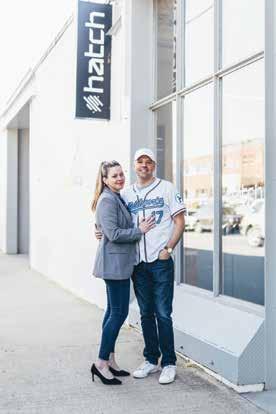









OCT 10, 2025
OPENING NIGHT THE SPHINX VIRTUOSI CHAMBER ORCHESTRA
NOV 13, 2023 CHOPIN THE MASTER OF THE PIANO
DEC 4, 2025
AMERICAN ROOTS with THE WILDWOODS
DEC 9, 2025 HANDEL’S MESSIAH
FEB 10, 2026
STELLA COLE sings THE GREAT AMERICAN SONGBOOK
MAR 18, 2026
A ST. PATRICK’S DAY CELEBRATION with DANÚ
APR 16, 2026 BRAHMS AMONG FRIENDS
MAY 21, 2026
SEASON FINALE with THE ULYSSES





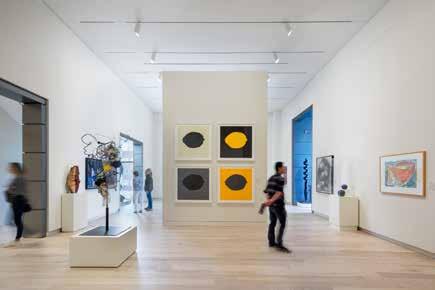

At Deerfield, life is rich with harmony, purpose, and connection. Located just minutes from downtown Asheville, our warm and welcoming community invites residents 61 and older to embrace each day with creativity and joy. Whether you’re learning a new instrument, painting in the studio, gardening with friends, or strolling through wooded trails, every moment offers an opportunity to grow, connect, and feel inspired. Discover a place where friendships flourish, wellness is nurtured, and each day brings something meaningful.
Discover your rhythm. Schedule a tour today! 828-944-9704 | deerfieldwnc.org
A HOLISTIC APPROACH TO A JOY-FILLED RETIREMENT











Sunday October 26 4:00




book between September and May.
Interested in seeing your ad in the next program book? Call 828.254.7046 or email info@ashevillesymphony.org for more details on how to advertise or sponsor!

















